
- ¿Quieres un boleto de hasta $500 grátis?
- Envía tu respuesta antes del 30 de abril y ten la oportunidad de ser premiado.
If Brazil is on your bucket list, look no further than this comprehensive budget travel guide to Brazil with tips on what to do, how to get around, safety, ways to save money, and more.
34min
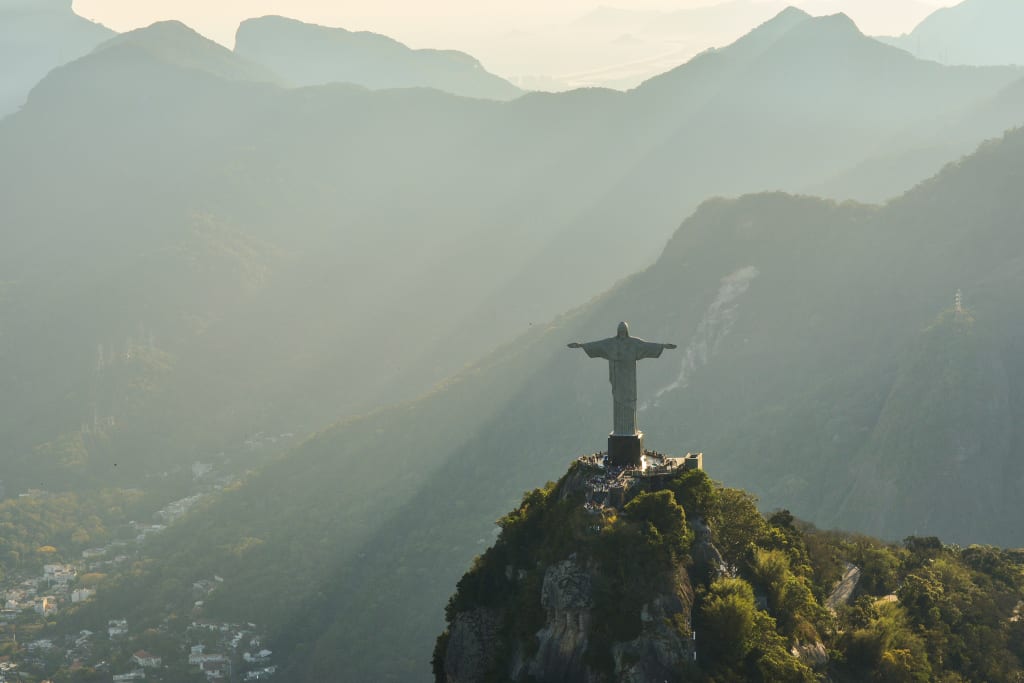
Brazil is the largest country in South America and the fifth-largest in the world.
Therefore, creating a best Brazil travel guide is not the easiest of tasks! When you think of all the places to visit in a country that is as big as the entire continent of Europe, you realize you probably won't be able to cover it all in one trip... let alone one travel guide. If you're traveling to Brazil or planning a trip to Brazil, I recommend you embrace the "no need to do it all at once" approach, learn from the Brazilians and relaxa!
Be it one trip or several, Brazil should be on every traveler's bucket list. In the land of Carnival you can find everything from little historical towns to towering skyscrapers in the largest cities of South America. Brazil's natural landscapes are must-sees, ranging from legendary paradise beaches over the coast, to tropical forests and the inland region of world's most biologically rich savanna, the Brazilian Cerrado.
Before I introduce you to the best places to visit in Brazil, it's worth going over Brazil's location and history, language, visa requirements, currency and other practical tips for a backpacker trip to Brazil.
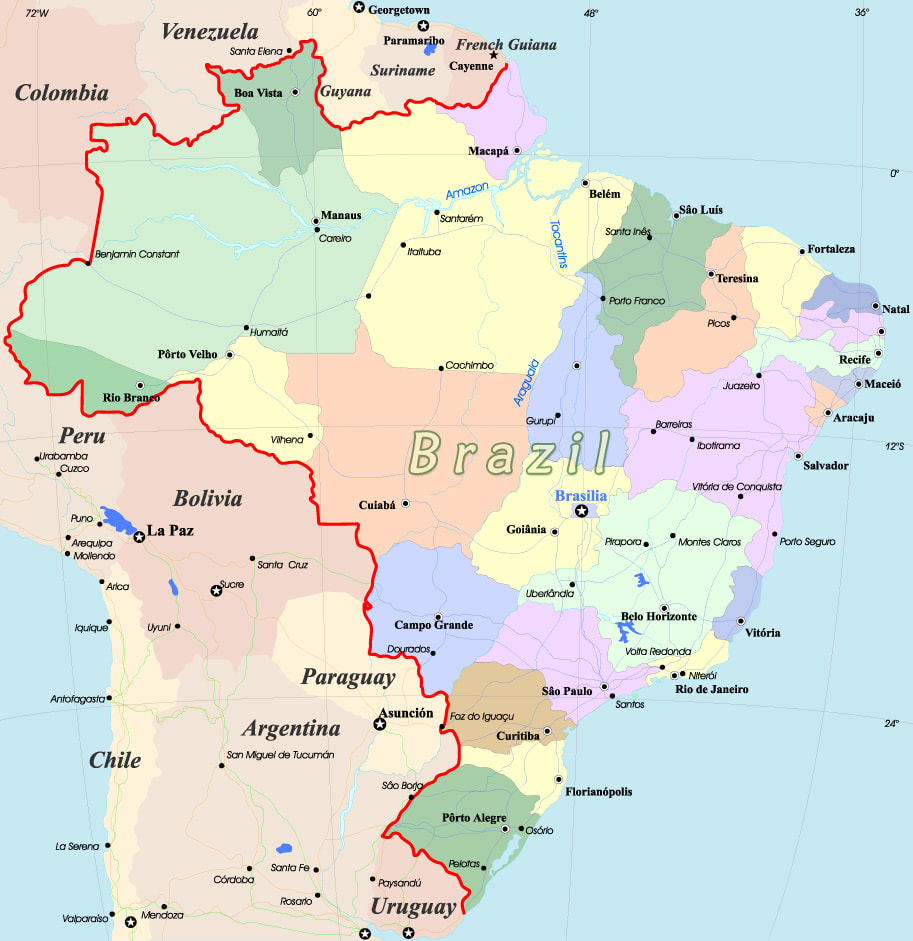
Brazil is a great destination to start a South America backpacking trip, because there are many cheap flights from Europe and United States to São Paulo, Salvador, Rio de Janeiro and Fortaleza airports. In addition, Brazil shares borders with ten countries! The list of its neighbors includes almost every country in South America, with the exceptions of Chile and Ecuador.
For instance, if your flight lands in São Paulo, you can take a bus, BlaBlaCar or hitchhike south and get to Foz do Iguaçu, Porto Alegre or Curitiba. From those cities you can easily cross to Uruguay, Paraguay or Argentina by land or boat. The distances between the capitals are equivalent to a night sleeping in a bus, or a long car ride. It's not difficult to find students and families making these routes and offering lifts.
On the other hand, if you land in Salvador, you'll be only a few hours away from the best beach destinations in Brazil: the northeast. You can go to places like Jericoacoara, Recife, Olinda, Aracaju, Fernando de Noronha, and Fortaleza.
Brazil is officially divided into five regions: North, Northeast, Center-West, Southeast and South. It's important to familiarize itself with each region before traveling to Brazil, because if you plan a trip that has the Iguaçu Falls and the Amazon rainforest in the same week, it's going to be extremely tiring, or worse, expensive! I'll talk later about how to find cheap domestic flights in Brazil, so keep reading.
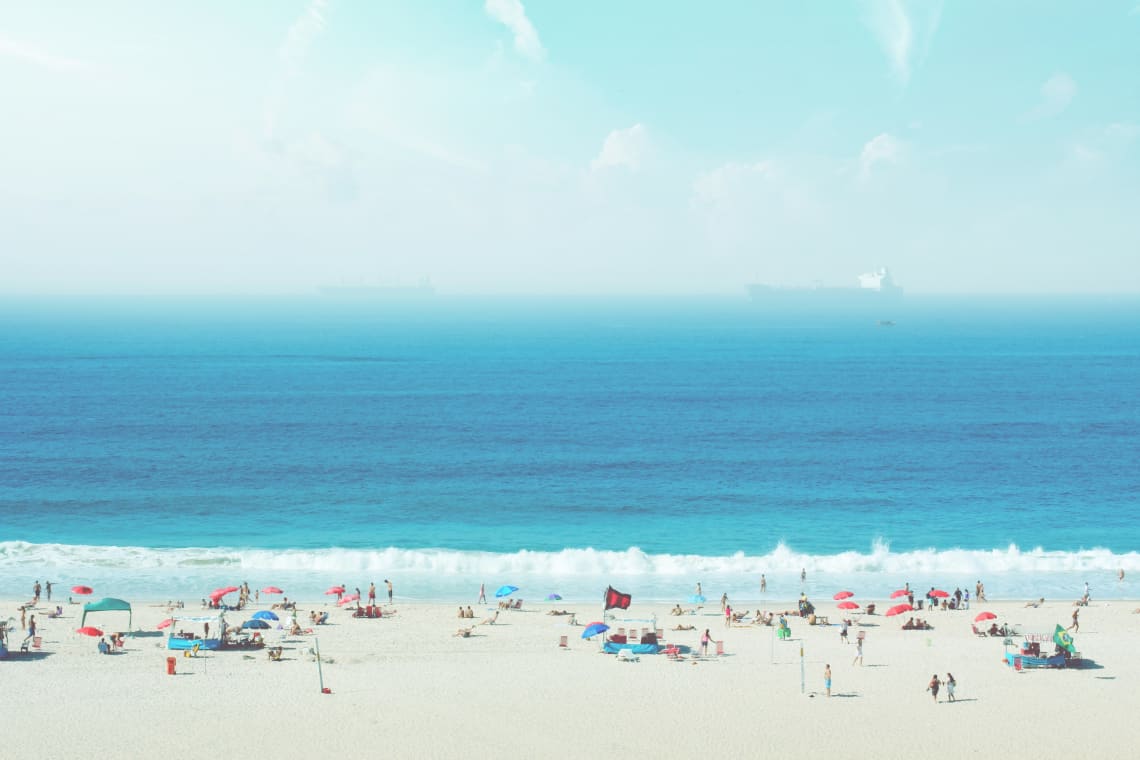
The first Portuguese colonial expedition arrived in Brazil in the year 1500. Before this, Brazil was inhabited by native Indians with many different cultures and languages. Later on, Africans were taken to the country farms, when Brazil became one of the biggest slavery-based colonies in the world. Today, Brazilians with African ancestry represent 54% of the country's population, while Brazilians with indigenous ancestry account for 0.4%.
After the abolition of slavery, European immigrants came to work in coffee farms widespread throughout Brazil. The mass European immigration changed the population, and this is still apparent today, as Brazilian society is a mix of diverse ethnic communities and a confluence of people of several different origins. Did you know that Brazil has the biggest Japanese population outside of Japan? How cool is that?
In 1882, Brazil became independent from Portugal, which marked the beginning of the Republican period during which voting was a privilege for just the highest classes. Afterwards, the country was governed by a military dictatorship which lasted from 1964 to 1985.
In 1988, a new Constitution was passed and Brazil officially became a democracy. Since then, the military has remained under the control of civilian politicians, with no official role in domestic politics. The current Constitution was drafted as a reaction to the period of military dictatorship, seeking to guarantee individual rights and restrict the state's ability to limit freedom.
Brazilians speak Portuguese, not Spanish!
I recommend you try to learn a few words before your trip, since less than 10% of the population speaks English. However, even if you don't speak the language, locals in the major touristic cities are accustomed to tourists, and can usually speak and understand basic Spanish or English. A lot of young Brazilians also speak excellent English, especially in the big cities.
Ultimately, the number of people who speak English around you will depend on the city you go and the social context you're in, so learning a few Portuguese words definitely couldn't hurt!
To be more specific, in big cities such as São Paulo, Curitiba, Rio de Janeiro, and Brasília, it's quite easy to find English speakers. After the World Cup and the Olympics, many places now have signs and services in English, too. On the other hand, when you go to the countryside and visit smaller cities and towns, it can be a bit more difficult to find English speakers, and you're going to have to rely on luck.
If you're traveling to Brazil and don't know Portuguese, make sure you always have internet (get a pre-paid SIM card) and a positive attitude, and try to communicate using translation apps. Brazilians in general are more than willing to help a lost foreigner. Most Brazilians love to interact with outsiders, but don't be offended if they don't. It's not because they are xenophobic, but likely because they don't feel comfortable or confident speaking English.
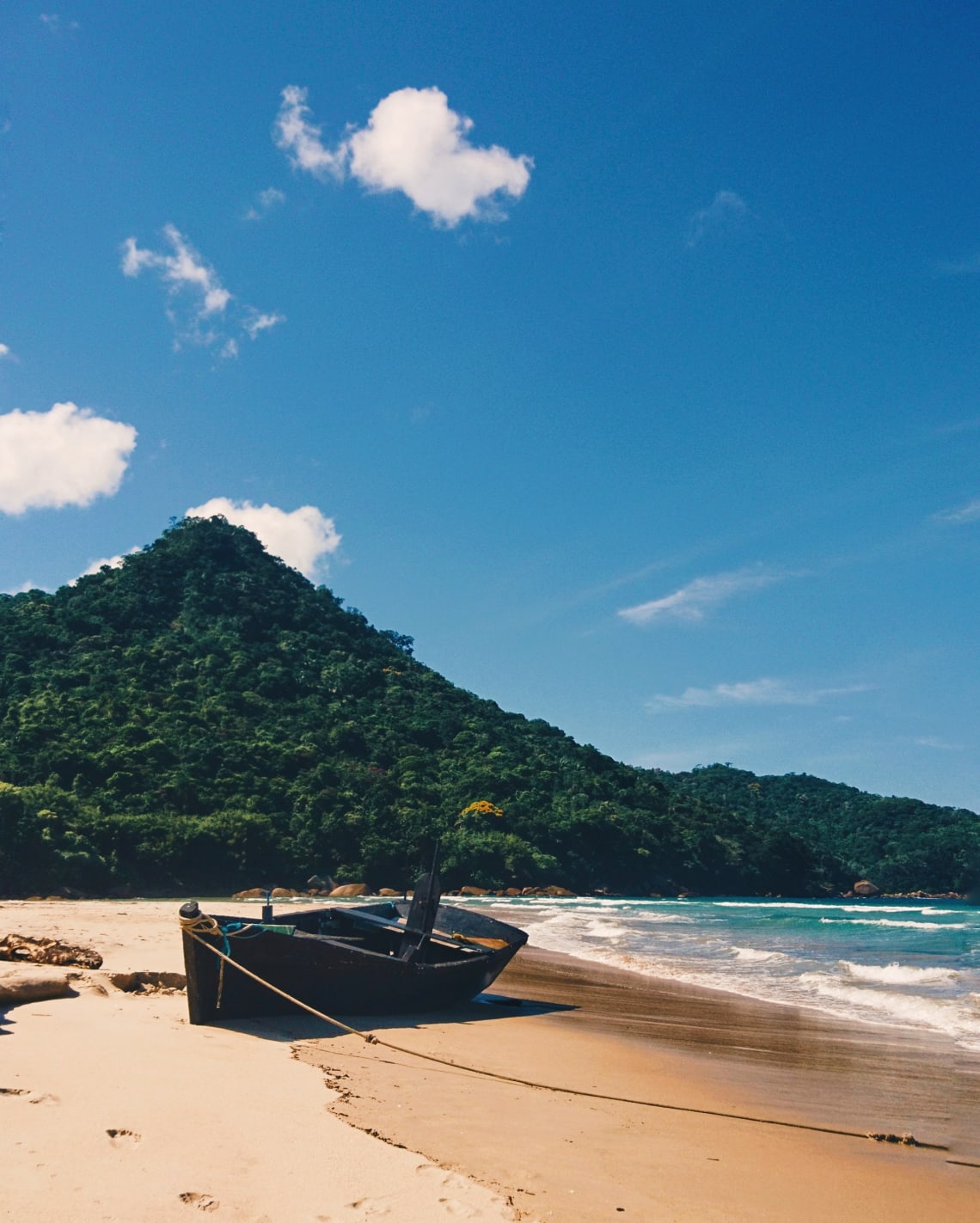
Winter in Brazil is between June and August with temperatures reaching lows of 5-8°C in the coldest regions and 15-20°C in the warmest regions. The southern region, formed by the states of Paraná, Santa Catarina and Rio Grande do Sul, is especially cold. Many Brazilians go to these states to visit cities with a European vibe, such as Curitiba, Joinville, Gramado or Blumenau.
Summer in Brazil lasts from December to February. In the coastal and northern regions, rain showers are common compliments of the country's tropical climate. On the other hand, in the Center-West, it can get really dry, especially in states like Goias and Tocantins, in the Cerrado biome. The Amazon Basin is the wettest area in the country and has consistently hot temperatures averaging around 27°C. Combined with high humidity, the Amazon Basin's climate can be difficult to handle if you are not used to it.
A packing list for Brazil should definitely include clothes made from breathable fabric like cotton. Polyester, nylon and the like are not a good idea for hot, humid weather. Flip flops are also essential, but remember to buy your havaianas once you get to Brazil (they're way cheaper there). Another thing you should remember is to bring a hat! The sun is stronger near the Equator and you don't want to get sunburned in Brazil.
Also, make sure to bring an extra layer for indoors and bus rides. Yes, you read that right — indoors! If you go to the mall, restaurants in city centers or cafés, you'll notice the air conditioning is turned up very high. Also, if you travel by bus, especially overnight, carry a small cardigan or sweatshirt for the same reason.
Finally, bring an adapter for Brazilians sockets (type N), or just carry a universal adapter to have no surprises. The electrical current in Brazil varies from region to region so it's a good idea to check out your destination(s) beforehand to bring the appropriate adapter(s). For example, in Rio de Janeiro and São Paulo, the current is 110V or 120V, 60Hz AC while in Salvador it is 127V and in Brasília it is 220V. If all your electronic devices are dual voltage, this won't be a problem.
If you're an experienced backpacker, you may find the next packing tips obvious, but it's always good to remember this list of things to take to Brazil:
For more packing tips for Brazil, check out this Brazil packing list for backpackers.
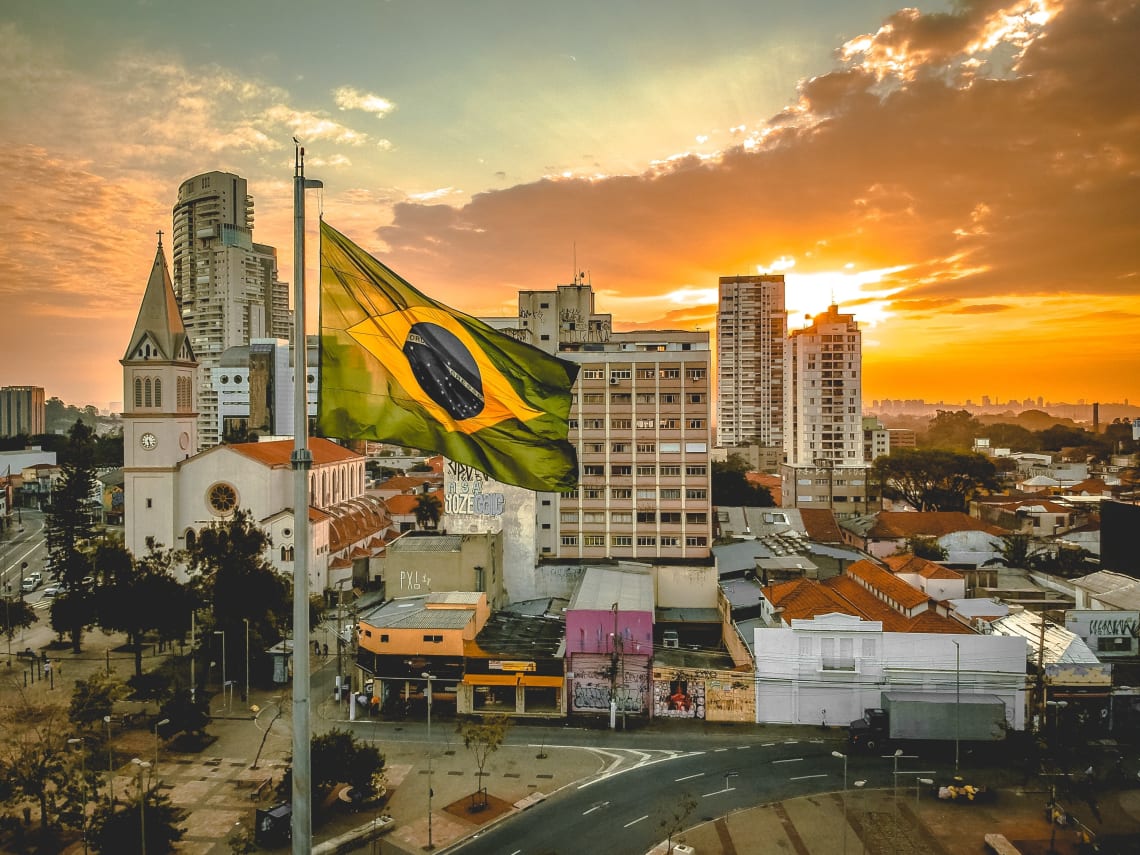
The majority of European nationals need two things to enter Brazil: a valid passport and a return ticket, or a valid passport and proof of the means to pay for a ticket. You will need to fill in an entry card on arrival which will allow you to stay up to 90 days.
The immigration officials will keep one part of this card and attach the other to your passport. Make sure you don't lose this part as you'll need to show it on departure!
U.S., Australian, Canadian, and Japanese citizens can visit Brazil for up to 90 days without a visa. Other countries may require a visa, which can be acquired from the Brazilian Embassy in their home countries.
Citizens of the following countries do not need a visa to visit Brazil as a tourist: Argentina, Austria, Belgium, Bolivia, Bulgaria, Czech Republic, Chile, Colombia, Costa Rica, Croatia, Denmark, Ecuador, Finland, France, Germany, Greece, Honduras, Hungary, Iceland, Ireland, Israel, Italy, Luxembourg, Monaco, Morocco, Netherlands, New Zealand, Norway, Malta, Paraguay, Peru, Philippines, Poland, Portugal, San Marino, Slovakia, Slovenia, South Africa, South Korea, Spain, Suriname, Sweden, Switzerland, Thailand, Trinidad and Tobago, Tunisia, Turkey, United Kingdom, and Uruguay.
Residents of all countries should always contact their local Brazilian Embassy or nearest consulate for specific visa procedures and travel information. A passport that is valid for six months past the date of first entry is also a requirement.
You should not depend too much on tourist information offices when traveling to Brazil. The main office is in the country's capital Brasília, and there's also another branch in Rio de Janeiro. In São Paulo and all the other 24 states, tourist offices are sponsored by state or municipal government, and often have pretty limited information or don't even exist.
The easiest way to find information about Brazil is through social media. Most capitals have accounts on Instagram just to help visitors, and travel blogging/Instagramming is very popular among Brazilians. A lot of people post in English!
It's a good idea to do plenty of research before you travel to Brazil. Read Brazil travel blogs, get a Brazil guidebook, and compare different Brazil travel websites' top picks for Brazil trip ideas. Don't forget to save this Brazil travel guide to your phone before you go!
When exchanging currency in Brazil, you'll usually find the best exchange rates in a "casa de câmbio." The only problem is that outside of big cities, you won't find that many of them. Assuming you're probably going to land in a hub airport like São Paulo or Rio, it's a good idea to exchange money right after arrival. Once you travel outside of Brazil's larger cities, it can be difficult to exchange money at all, or you might find terrible rates.
Another option for exchanging currency (in larger cities) is to find major banks like Banco do Brasil, Itau or Santander. It's also worth noting that carrying US dollars might make exchanging easier, as more places accept US currency.
All major credit cards are accepted, even in small cities. But in the more rural areas, paying with a card can be quite limited. You can use your credit card to withdraw cash in most banks in the bigger towns and cities. In smaller towns, Banco do Brasil will provide this service.
If you're wondering if Brazil is for safe tourists, you're not alone. The short answer to the question "Is Brazil safe?" is that it all depends on where you go. Much like other large countries, Brazil offers differing levels of safety, which can vary from region to state to city and even neighborhood to neighborhood in big cities.
One could say that Brazil is as safe as most of its neighboring countries. So, if you're a traveler with a lot of experience in Latin America, you'll do perfectly fine in Brazil. The same precautions that apply to countries like Peru, Bolivia, Colombia, Argentina and Paraguay would also apply during a trip to Brazil.
However, Brazil receives plenty of bad press about violence and crime rates, which makes you wonder how safe Brazil really is for tourists. And not without reason.
Rio de Janeiro is an example of a relatively unsafe destination in Brazil. If you watch or read news about Rio, you may get really scared as the city has cases of violence, robberies and other problems that originate from high social inequality rates and other social issues.
Surprisingly, Rio is full of tourists year-round! The key to staying safe on a trip to Rio — or any city in Brazil for that matter — is to learn about the safest parts of the city you're visiting.
Chat with locals, fellow travelers, or your Worldpackers host in Brazil and ask people about places they'd avoid walking alone at night, and places they feel safe and go often. Read blogs, guides and articles about the locations you decide to visit. Try to get as much information as you can before your trip, as well as when you get there.
It may sound obvious to some experienced travelers, but it's also worth mentioning: use common sense! If you want to know more about how to travel safe in Brazil, use the following list of precautions to guide you (also applicable in any country in South America).
If you want to avoid fees and withdraw all your cash at once, I get you. Do that (preferably along with one or more friends) and then go back to your hostel and hide parts of your money in different places. 25% of your money can go to the bottom of your backpack which stays in the hostel locker. 50% of your cash can go to the hostel's safe, if they have one.
When you go out, carry only the minimum cash needed. By traveling that way you can also plan your day a little more, because you have to estimate how much money you need to carry. This is also a clever way to save money while traveling.
Also, remember to keep your passport, flight tickets and other important papers in the hostel at all times. Carry a copy of your ID or passport if you want to be extra careful. Pickpocketing and armed robbery can happen, especially in some areas of big cities like Brasília, Recife, Rio de Janeiro and Fortaleza.
Don't leave anything valuable lying around in your hostel. Look for hostels which offer lockers, or at least a locked room where you can safely store your bags.
Avoid jewelry and don't walk around flashing an iPhone, iPads, expensive smartphones, cameras and other expensive electronics. Be alert and walk like you know where you're going! Never hold a map (or your phone) up in a busy street because that will make you look disoriented, and turn you into an easy target.
When it comes to Brazil travel tips for safety, this is a big one. In addition to using ATMS inside buildings, avoid being the only one at the bank and try not to withdraw cash at night. It's always safer to use ATMs during normal working hours because there's always guards at the bank agencies from 10 am to 4 pm.
Have you ever read Paris travel guides that say you must get away from people trying to fool you right under the Eiffel Tower? They say someone tries to make you sign a petition to help a charity to distract you, while others take your backpack. If you can get scammed in the most romantic city in the world, you can get scammed in Brazil too.
In Brazil, people try to fool you in many different ways. In beach cities, you'll see people selling tours illegally, right next to agencies with a decade of tradition in the local community. They look exactly the same.
How can you spot which one is which? The agency will always have clear information about price, itinerary, and safety procedures written on a flyer, board, booklet, guide, or something similar. Also, trustworthy service providers will always negotiate prices in advance.
If someone offers you a tour and tells you to "pay later", or "pay after", don't take it. If the person speaks English or you speak Portuguese, awesome! You can ask them as many questions as you want and establish a time to pay pay. But if you don't, the person can try to fool you by charging a different amount in the end or they can try to say you fooled them, etc... and you might be stuck in a situation you're not expecting. In short, always make sure you get all the information you need before starting an activity.
Distraction is another common tactic used by street thieves. Sometimes, it's something as simple as someone asking you for a cigarette, the time, a coin or a lighter. As soon as you slow down and open your bag, you're off guard and someone grabs your phone and makes a run for it.
If you go to the beach, don't leave your stuff lying around on the sand while you go for a swim. Only bring essentials. Leave home wearing your bathing suit and take a towel, a small amount of cash and maybe your phone, and nothing else.
Avoid walking on empty streets, in deserted parks or on urban beaches like in Rio, Maceió, Recife, Salvador or Fortaleza.
If you feel dizzy, fatigued or "weird" after drinking something, your drink may have been spiked. If you think so, call the hostel you're in and/or try to get to a safe place immediately. Never leave your drink unattended and don't take drinks from strangers.
As a general rule for super safe travel, never book a tour, a service or even accept help from people who approach you unsolicitedly at the airport, on the street or next to famous tourist spots. Choose a Worldpackers hostel in Brazil and ask your host about safe tours and things to do in Brazil. Another nice way to get safe tours in Brazil is to book on websites ahead of time, for example Airbnb experiences.
In Brazil, you must be extra cautious in big capitals like São Paulo, Rio, Belo Horizonte, Salvador, Manaus, and Porto Alegre. But there are very safe cities in Brazil too. The safest city in Brazil is Brusque, in Santa Catarina, famous for its German heritage. Campina Grande (Paraíba) was ranked as the most dangerous city in Brazil in 2017.
The best thing you can do to travel safely in Brazil is to read guides and use social networks to your advantage. People who have traveled to places where you haven't yet can give you updates in real time, or offer you an overview on where to keep your eyes open and be extra careful.
Talk directly to a Worldpackers expert or bloggers to get more questions answered about safe travel in Brazil.
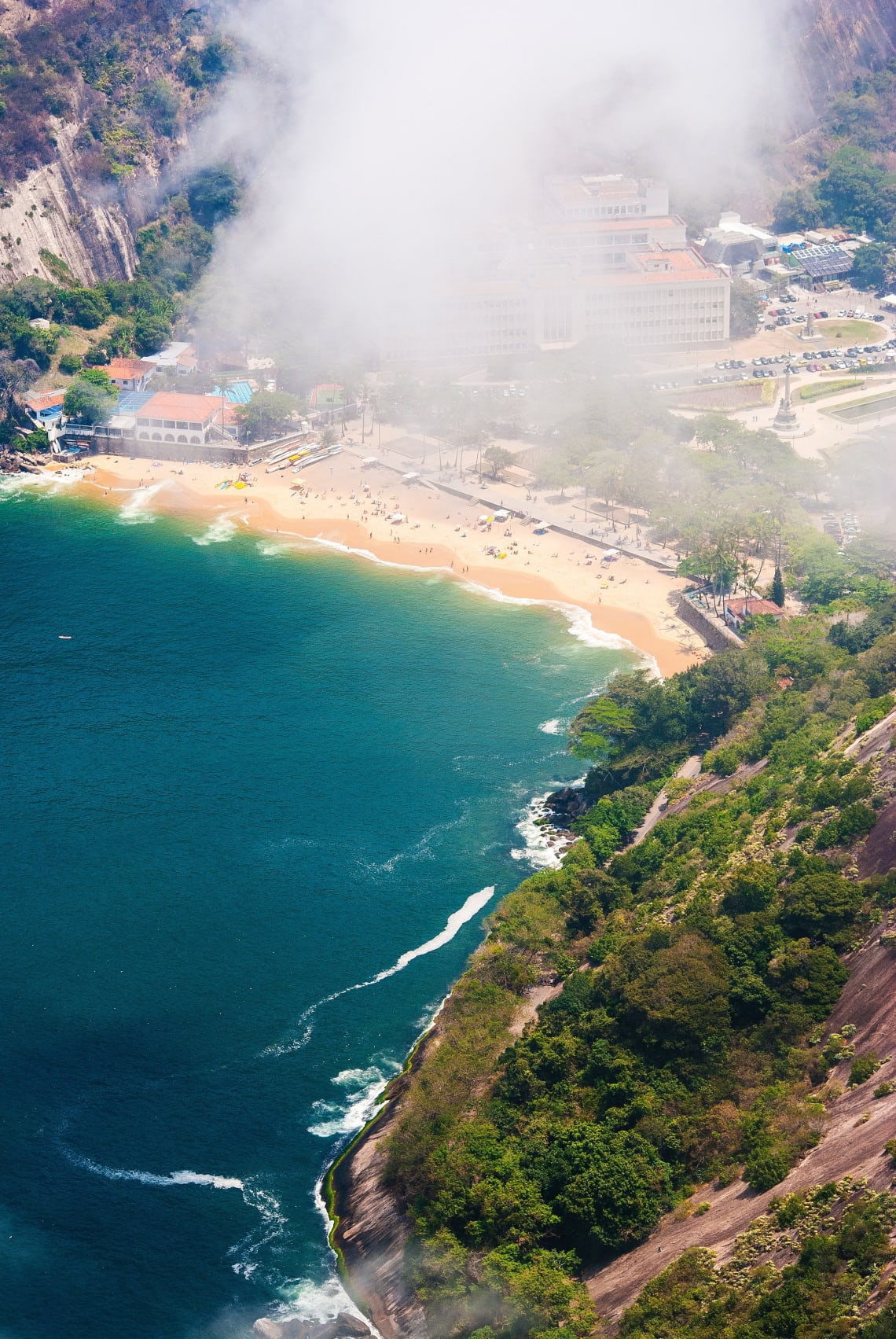
The major airlines serving Brazil include: Aerolineas Argentinas, Air France, AeroPeru, Alitalia, American Airlines, British Airways, Continental Airlines, South African Airlines, Swissair, TAP Air Portugal, Iberia, Japan Airlines, Korean Airlines, Pluna, KLM, LAN-Chile, United Airlines, and Lufthansa. The local airline Azul also provides flights between São Paulo and some European cities like Lisbon, Paris, Porto, London and Rome.
As you can imagine, prices can vary, but you can expect to pay between USD $700-$900 for a round-trip flight from Europe. During a promotion, the same flight might be found for less than $500. If you're flying from the United States, you can usually find good deals on flights from Miami to Manaus, and Los Angeles to Goiania.
Depending on where you live, you can have a greater or lesser opportunity to book cheap airfares, but there are some common techniques that everyone can use to find cheap airfare anytime of the year.
It's worth noting that Brazil shares land borders with Argentina, Bolivia, Colombia, French Guiana, Guyana, Paraguay, Peru, Uruguay, Venezuela and Suriname. If you have time for a longer trip, why not explore more of South America and then enter Brazil by land? If you're looking for an adventure, you might even consider entering Brazil by river on the Amazon route from Peru.
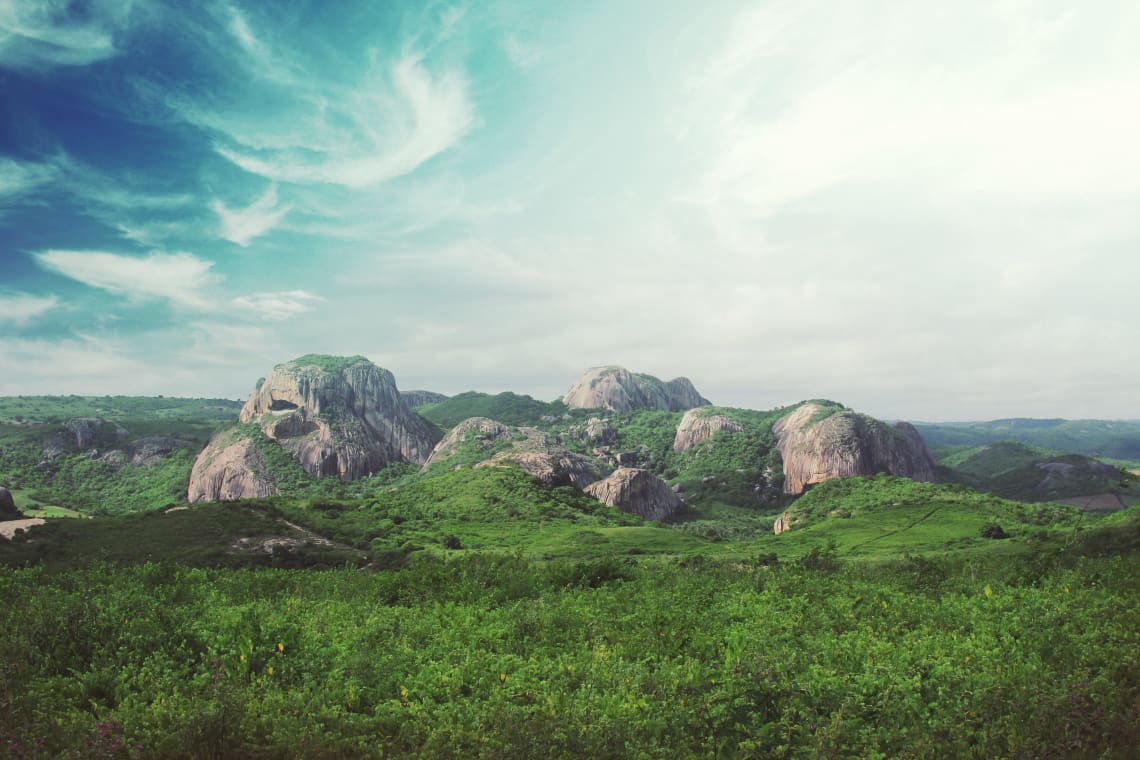
The favored option for travel within Brazil is by bus. Air travel in Brazil has gotten considerably cheaper in the last decade, but it's still not as cheap as flying low-cost in Europe. However, it's always a good idea to check promotions for air travel in Brazil, because sometimes flying can be as cheap as taking the bus!
The use of car sharing apps has grown a lot in the last years in Brazil, and it's getting safer and easier to travel this way. There are a few car sharing apps you can use in Brazil, such as Waze Carpool, BlaBlaCar — which has a ladies only option called "só para elas", and FemiTaxi — a ladies only only taxi company. Safety is a major issue for women everywhere in the world, so it's nice to know that as a woman traveling in Brazil, you have extra options for staying safe!
The four main national airfare carriers are LATAM, Gol and Azul. All of Brazil's major cities are served by at least one of these airlines. You can use apps like Kayak, Skyscanner or Voopter to keep an eye on prices.
I don't recommend flying with Avianca Brazil since they have filed for bankruptcy, and although a lot of flights have been canceled, they still show on some search websites.
As previously mentioned, bus service is the most common option for budget travel in Brazil. In general, buses are punctual, clean and comfortable. Sometimes you'll encounter problems with delays and cleanliness when traveling around the North region, especially in the Amazon Basin. It's a good opportunity to take a boat instead and have an adventure!
All major cities and towns in Brazil are connected by bus. When buying your ticket, you'll notice there are several types of long distance busses — comum, executivo, semi-leito and leito. It's best to go for executivo or semi-leito; they're not the cheapest, nor the most expensive, but are comfortable enough that you won't end up with a stiff neck or back pain!
The difference between semi-leito and leito is that in leito you can lie down like in a sleeper train. Leito is usually the most expensive class of bus in Brazil, so sometimes, water, soda/juice and snacks are included. The most popular sites to look for bus timelines and available seats are ClickBus and BuscaOnibus.
If you do intend to travel by bus in Brazil, you should buy your ticket at least a day in advance, especially if you plan to travel during weekends or festivals. This way you have a higher chance of getting a bus that is comfortable enough for a few hours or a night, without paying a high price. Also, note that while most inter-city buses are air-conditioned, in small towns in the countryside, you'll just have to accept that it's hot!
There's also a train service in Brazil, but it's extremely limited and the trains are slow (40km/h). Most train services in Brazil are historical railways that have been restored for touristic purposes. People also take the train in São Paulo city, but it's not a common thing in other Brazilian capitals, and there's just a few intercity trains. In conclusion, getting around Brazil only by train is not possible.
Due to its cultural diversity, Brazil has incredibly unique cuisine. In fact, one of the best things to do in Brazil is to go out and try local food.
I've picked the best dishes from each different region in Brazil, so you can get a quick insight into some of the native specialties.
The North region of Brazil is home to the Amazon Rainforest. The cuisine is strongly influenced by the local indigenous culture, which makes it especially unique. Traditionally, the indigenous eat fish, root vegetables, yams and tropical fruits. One popular dish is açaí com peixe (açai berry with grilled fish and roasted cassava or corn flour mixture).
The Northeast region of Brazil includes the State of Bahia, considered the heart of black Brazil. Bahia's predominately African background is abundantly apparent in its traditions, music, and food. In Bahia you'll find a thriving culinary scene typified by local produce, traditional recipes, and seafood-based fare. Specialties include acarajé, vatapá, bobó, and acaçá. Bahia is the perfect place in Brazil for a local food journey!
The Northeast region also includes Maranhão, Piauí, Ceará, Rio Grande do Norte, Pernambuco, Paraíba, Sergipe, and Alagoas. These states are very different from each other. Some have a strong Dutch influence from colonization, while others have a more Portuguese influence. In the coastal areas you'll get high quality and diverse options of seafood dishes. One example is moqueca, which consists of fish, onion, tomato, pepper, cilantro and dendê oil all cooked together in one pot.
The Center-West region of Brazil consists of a mix of the original Indigenous population and people from the Southeast and South regions who migrated Center-West in the '80s and '90s, when Brazil had a boom in agri-business development. In the Center-West you can expect to find dishes with fish, beef, chicken and pork from the huge ranches which dominate the region. So if you love meat, Center-West your place!
In the same region you'll also find beiju, tapioca, and other typical Indigenous foods made from cassava and cassava starch. Make sure to taste the local peppers by trying jiquitaia sauce, and eat the Center-West's version of feijoada.
The Southeast region of Brazil includes Rio de Janeiro, Minas Gerais, Espírito Santo and São Paulo, so you can expect several distinctive styles of cooking! One of the most popular dishes is arroz com feijão (rice and beans). Dive deep into the local cheese culture in Minas Gerais, and make sure to try pão de queijo, a local (and famous) Brazilian specialty!
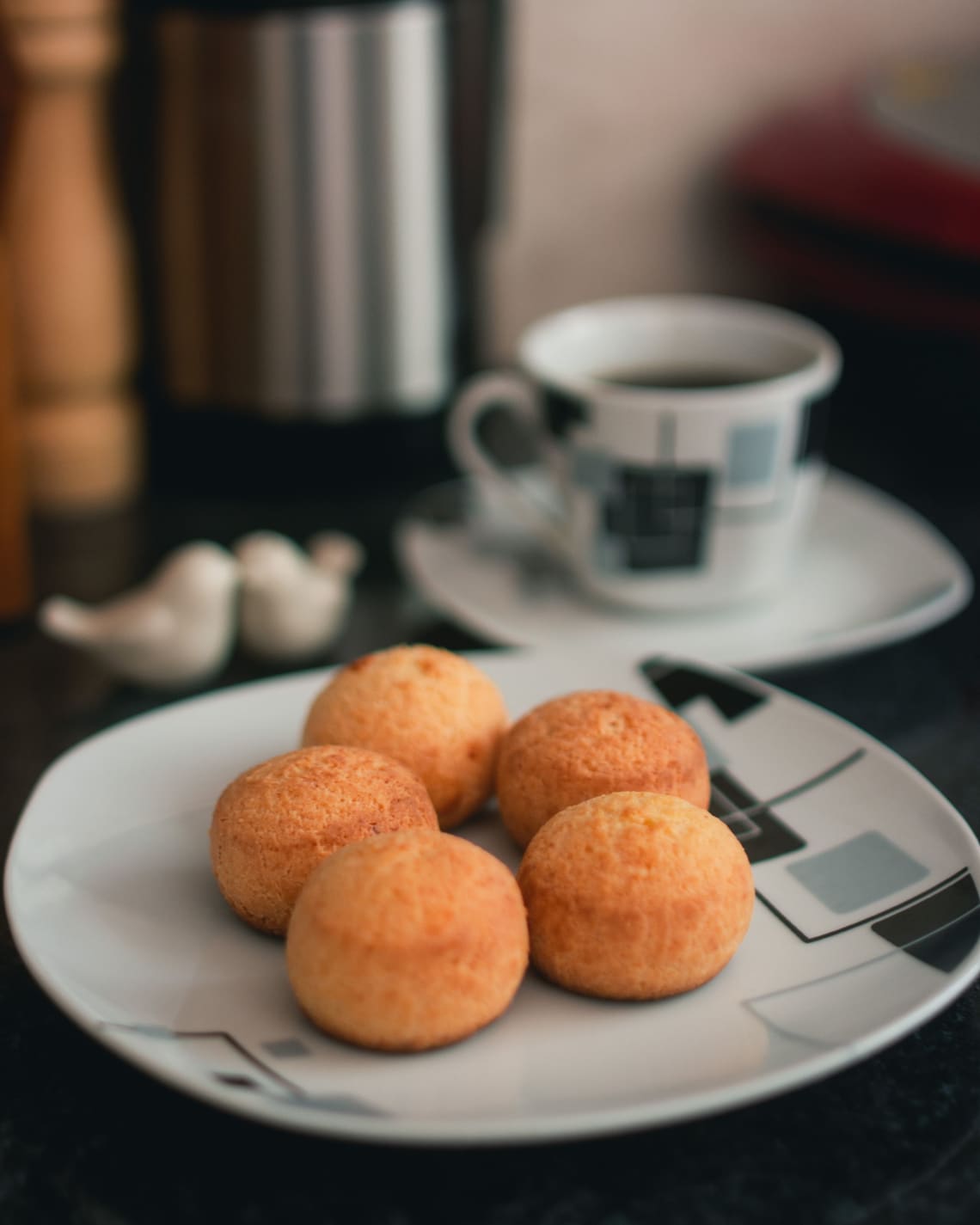
In São Paulo and Rio, you'll get a more metropolitan vibe; fast food branches and famous restaurants abound. There's also significant influence from Italian and Portuguese immigrants, so you won't be disappointed.
The South region of Brazil is the national home of the "gauchos", or Argentinian/Uruguayan cowboys. Expect lots of wood-fire barbecue and spirits to fight the cold!
Dishes influenced by the German and Dutch settlers who arrived in the region centuries ago are also very present. Make sure to try the locally-made beer and wine, gourmet cheese and much more! You don't want to miss drinking Chimarrão, a hot beverage made from yerba mate and pine nuts served in a gourd cup.
Remember that tipping in Brazil is not compulsory... but a tip of 10% is generally expected (and appreciated). Most restaurants include the service charge on your bill, but you can ask to take it away if you want.
Here are the top picks for Brazil travel destinations. I've divided this section by region, so it's easier for you to plan your Brazil travel route. In my opinion, these places are the absolute best of Brazil. Any of these destinations is reason enough to plan a visit to Brazil!
North Region
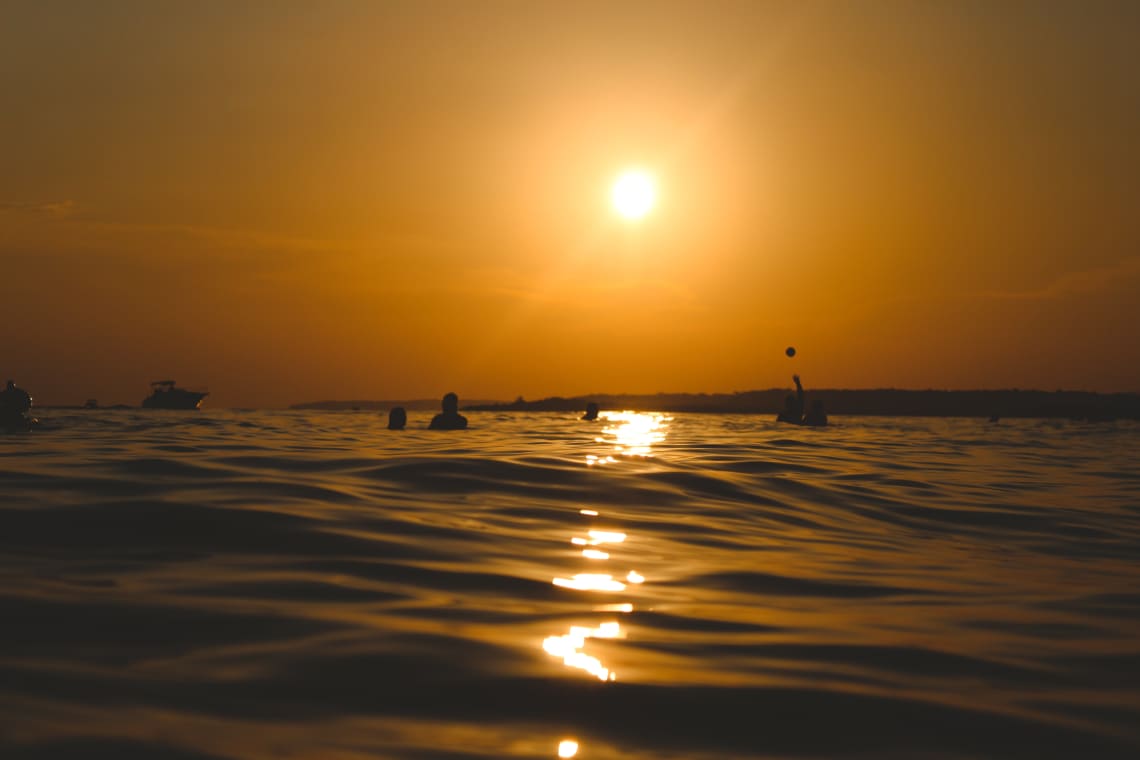
If you want to go North, your flight will probably land in Manaus, the capital city of the state of Amazonas. There you will find MUSA — Museum of Amazonia, the Amazonas Theater, and other historical landmarks. From Manaus, you can also take a boat to see the "Meeting of Waters" (Portuguese: Encontro das Águas), the confluence between the dark Rio Negro and the pale sandy-colored Amazon River, or Rio Solimões.
Manaus is also the gateway to the Amazon rainforest and there are infinite tour options for every type of travel budget.
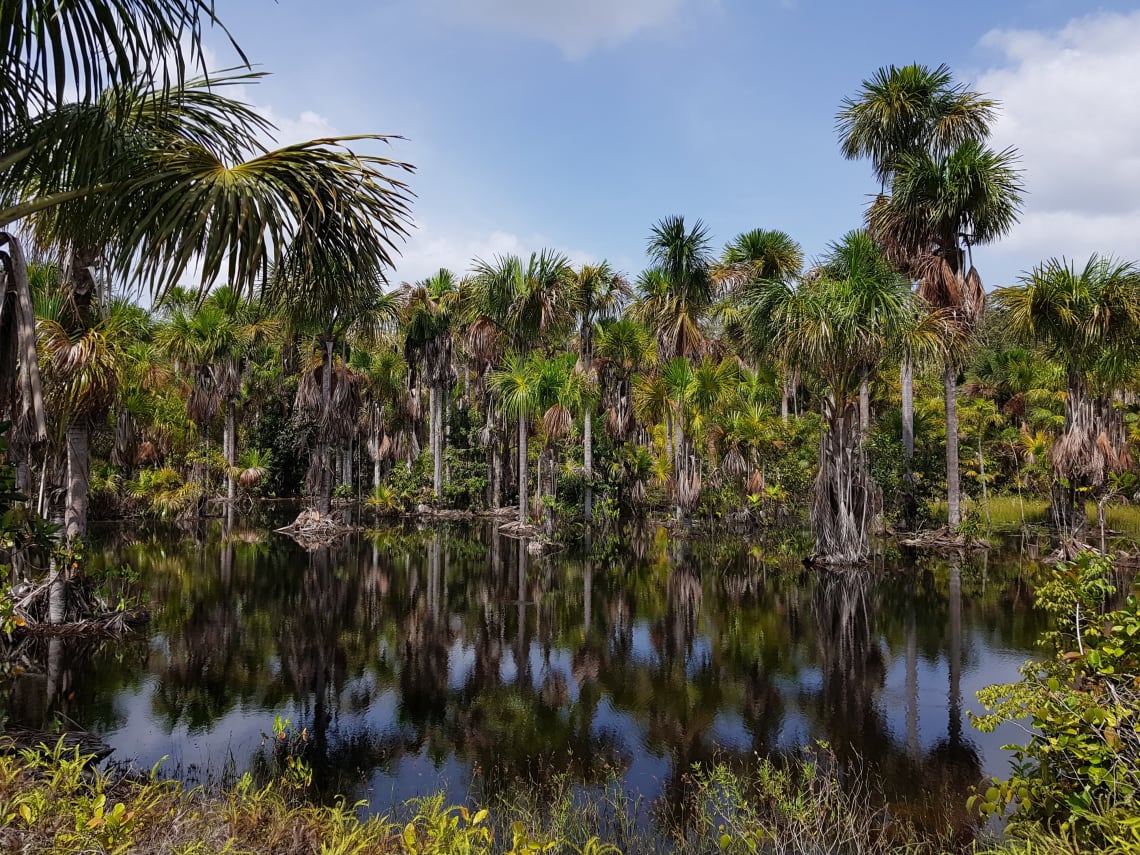
A small town north of Manaus, Presidente Figueiredo is home to over 100 waterfalls, and is the perfect place for an avid outdoor enthusiast. It contains part of the Uatumã Biological Reserve, a strictly protected conservation unit, and also holds about 2% of the Rio Negro Left Bank Environmental Protection Area, a sustainable use conservation area.
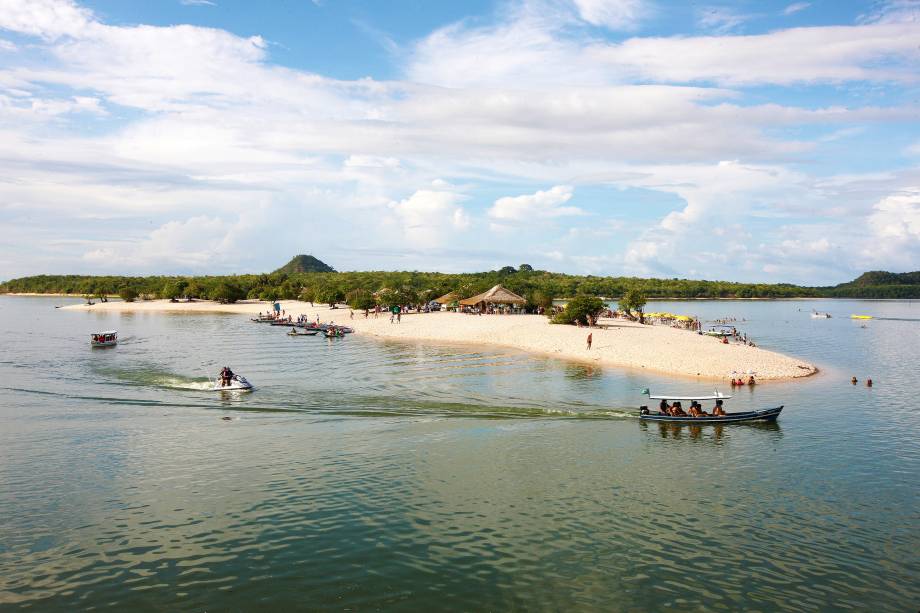
Alter do Chão is, in my opinion, one of the best places in Brazil. This beach paradise in the middle of the Amazon is one of the administrative districts of the city of Santarém and received the attention of Brazilians around 2017, when the Ministry of Tourism declared it a destination with potential.
Alter do Chão is located on the right bank of the Tapajós river, in the state of Pará. Commonly referred to as the "Carribean of the Amazon" because of its white sand beaches, crystal clear waters, and laid-back vibe, Alter do Chão is a relaxing place to spend a few days in the Amazon. During weekends, the residents of Santarém and other nearby cities come in search of parties, beer, barbecue, music and dance.
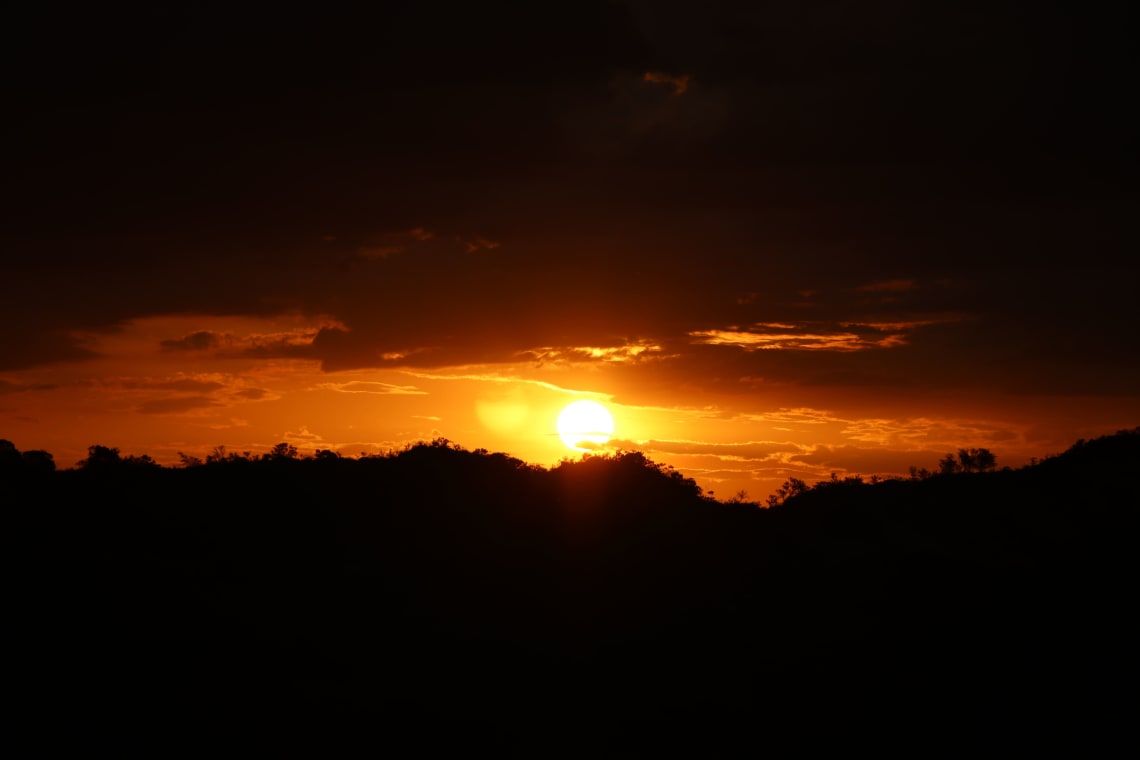
Jalapão is a national reserve in the state of Tocantins, famous for its dramatic landscapes with large orange sand dunes, towering rock formations and clear rivers and streams.
The region is a popular destination for adventure tourism and eco-tourism. Most of Jalapão's attractions are located in the cities of Mateiros, Novo Acordo, Ponte Alta do Tocantins and São Félix do Tocantins. The Jalapão region has an area of 34,000 square kilometres, and is must-see for anyone traveling to Brazil.
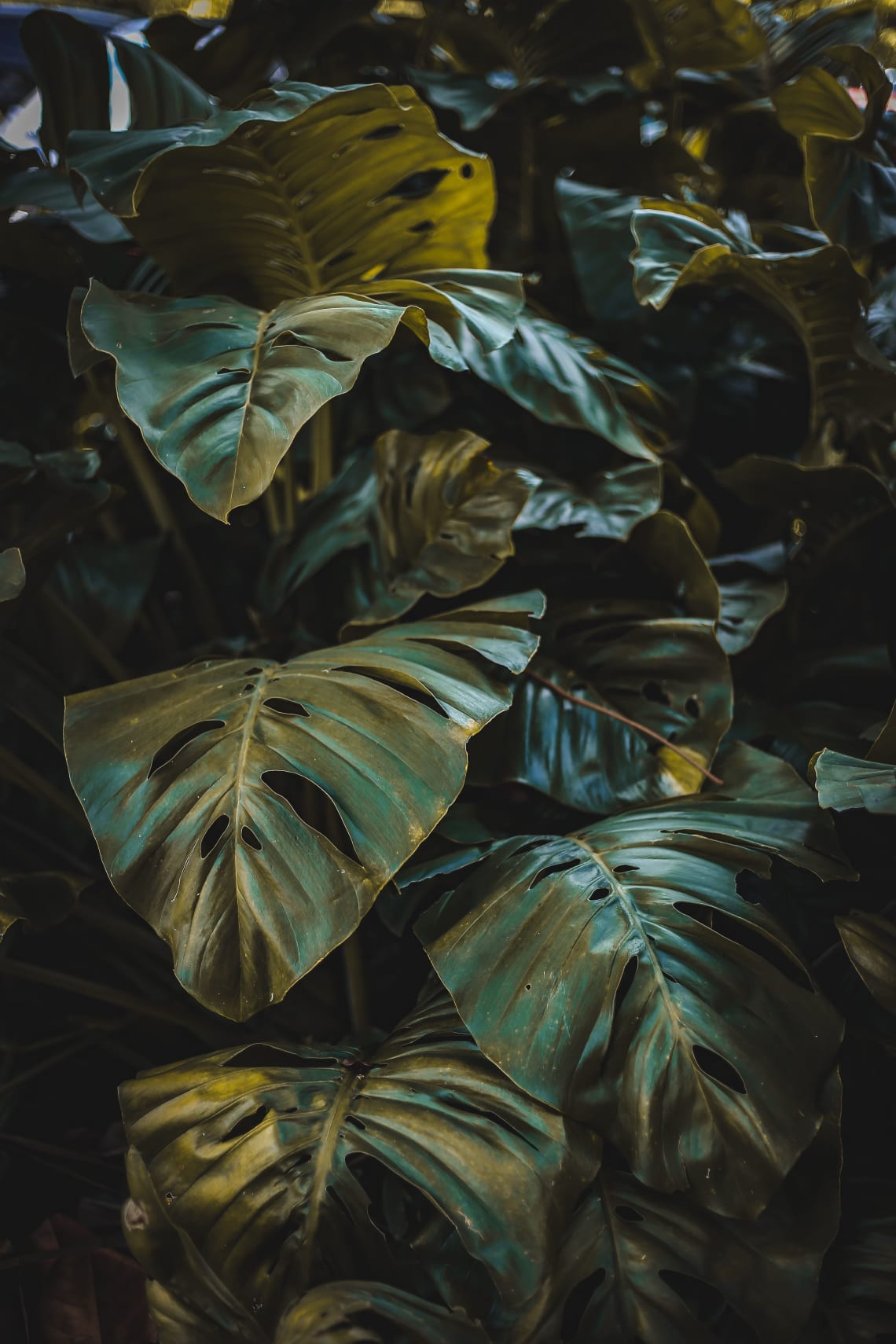
Approximately 100 km from Manaus in the Rio Negro, you'll find one of the most unique environments on earth: the Anavilhanas Archipelago. This is a complex of over 400 islands in the middle of the Amazon that constitutes the largest group of pristine river islands in the world!
The Anavilhanas National Park encompasses the archipelago and is part of a World Heritage Site. In the dry season (from September to February), you can enjoy the beautiful white sand beaches, or "prainhas", throughout the archipelago. In rainy season (from March to August), you can experience boat trips between the islands and swim in crystalline streams.
You can also explore Jaú National Park in the region.
Taking place at the end of June every year and attracting people from all over the world, the city of Parintins (Amazonas) holds a unique festival with traditional music, dance, folklore and local food. The main theme of the festival is 'Boi Bumba', a battle between two groups representing the legendary bulls, "Caprichoso" and "Garantido."
You won't see costumes like those of the Parintins Folk Festival anywhere else in the world. They're nothing like those seen in Rio's Carnival, as the general atmosphere and music of Parintins Folk Festival is entirely unique.
The festival begins at a harbor where thousands of boats arrive with tourists eager to take part in one of Brazil's greatest folk festivals. If you are in Brazil around the time of Parintins Folk Festival and enjoy discovering local culture, it's certainly worth making the trip.
Pro tip: There are many cheap flights from Portugal to the Northeast region of Brazil. Try looking for flights from Lisbon or Porto to Salvador, Recife, Fortaleza, or Natal and you'll be pleasantly surprised!
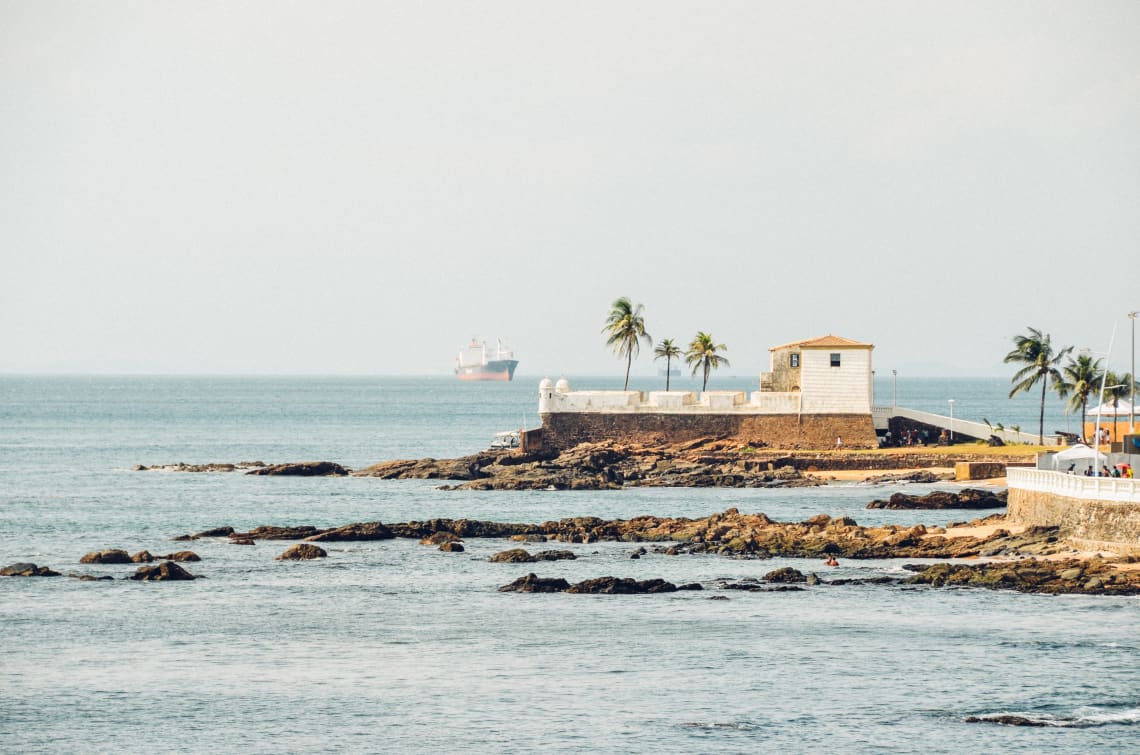
Carnival in the state of Bahia takes place in February and is one of the largest festivals in Brazil.
If you attend, you will hear (and very likely dance to) the best Afro-Brazilian music that Brazil has to offer. Salvador is the capital of Bahia and the African center of South America. The Carnival in Bahia celebrates all things African in the region, making it distinctive from the Carnival in Rio de Janeiro.
Salvador is famous for great sunset views... so take your time to explore and find your favorite! Also make sure to visit the famous viewpoint from Elevador Lacerda. Ponta do Humaitá and the Modern Art Museum of Bahia are other popular attractions. Walk around the Pelourinho neighborhood and try local food and cachaça (a local spirit made from sugar cane). Finally, don't forget to visit Farol da Barra and the calm beach of Stella Maris!
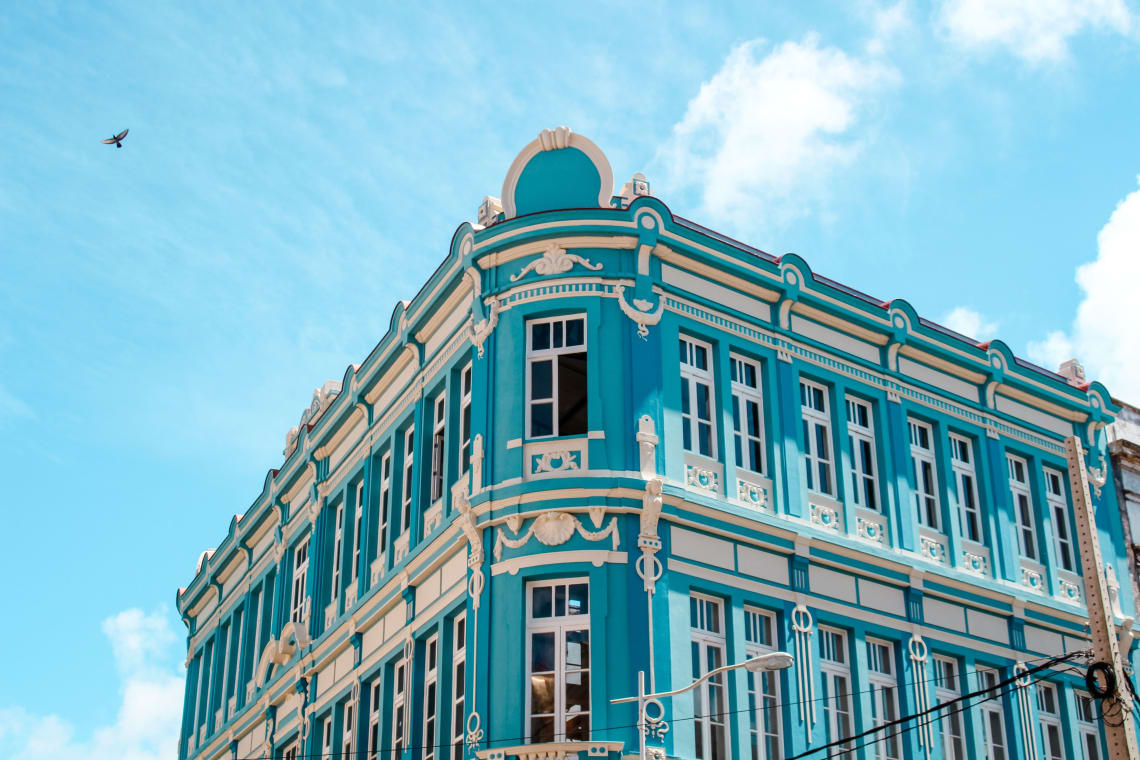
Recife is a center for culture and leisure in the Northeast region of Brazil. It's also the main theatrical, gastronomic, and medical hub of its region. From the beautiful Recife Antigo (Old Town) to the various scenic spots with rivers, bridges, beaches, Recife has a lot to offer.
Recife is one of the most-visited Brazilian cities during Festa Junina and Carnival. Carnival in Recife is one of the biggest parties of the year in Brazil. Frevo music is the most famous and popular folk music style associated with the Northeast region of Brazil. Originally from Recife, Frevo music involves the parade of Carnival blocks (street bands) playing varied musical genres, such as maracatu, forró, and even electronic music. You can visit the Frevo Museum in Recife to learn more about the history of this cultural symbol.
Another highlight of Recife is the Instituto Ricardo Brennand, a cultural institution of Recife that comprises a museum, an art gallery, a library and a large park. The museum has an incredible collection of art from all over the world. Also worth visiting is the Parque das Esculturas, a park built on a reef in front of the Marco Zero of Recife. Parque das Esculturas is a unique place that will certainly surprise you when you visit Recife.
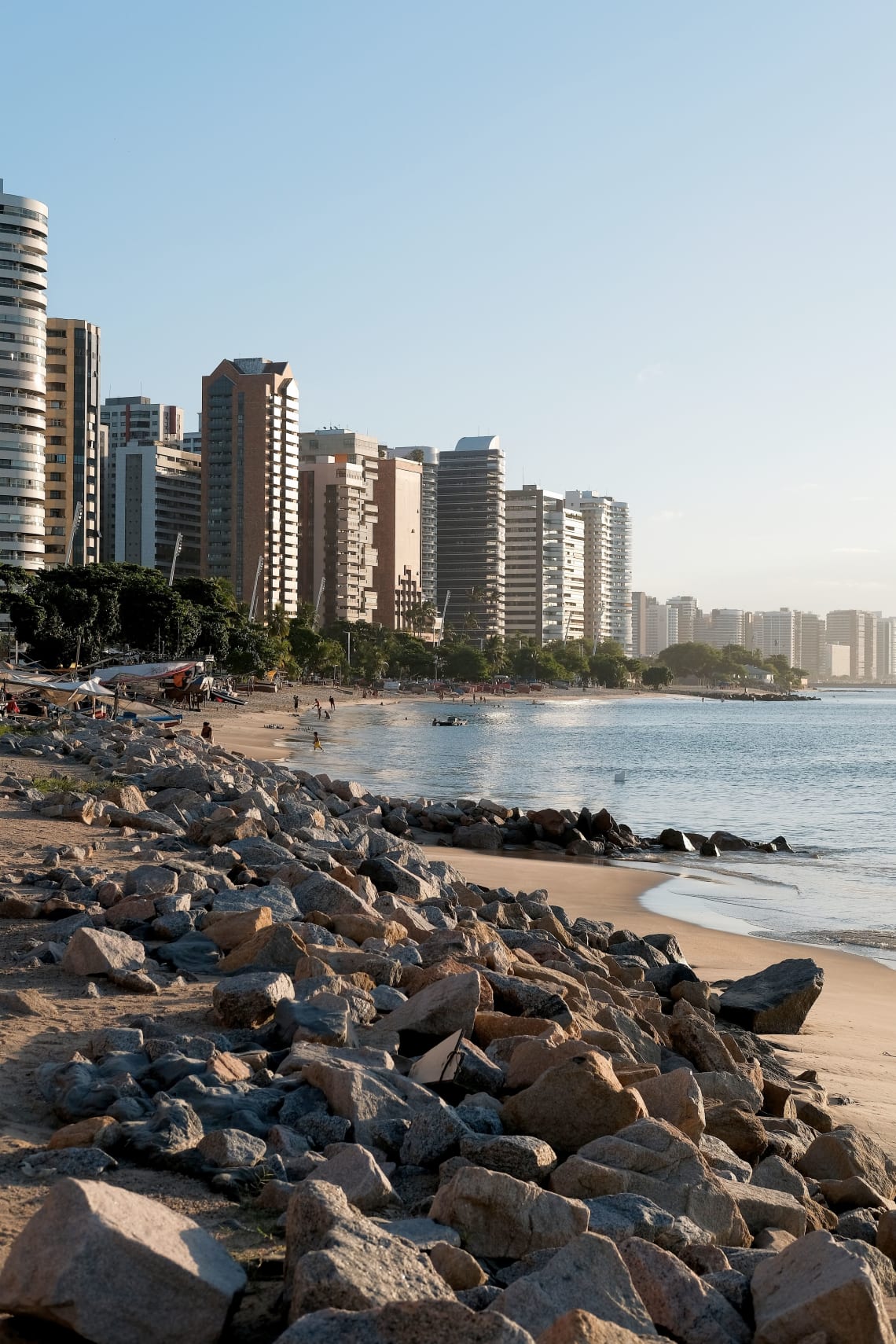
From Recife you can find transportation to Jericoacoara, a car-free town standing 300km from Fortaleza (capital of Ceará, pictured above).
Jeri, as locals call it, has been a National Park since 2002, so the construction of highways and roads — as well as any type of pavement whatsoever — is prohibited. Jeri consists of blue lagoons, calm seas, and huge dunes, and was recently selected by The Washington Post as one of the most beautiful beaches in the world. Most visitors arrive from Fortaleza and change vehicles in Jijoca, the nearest town to Jeri with paved roads.
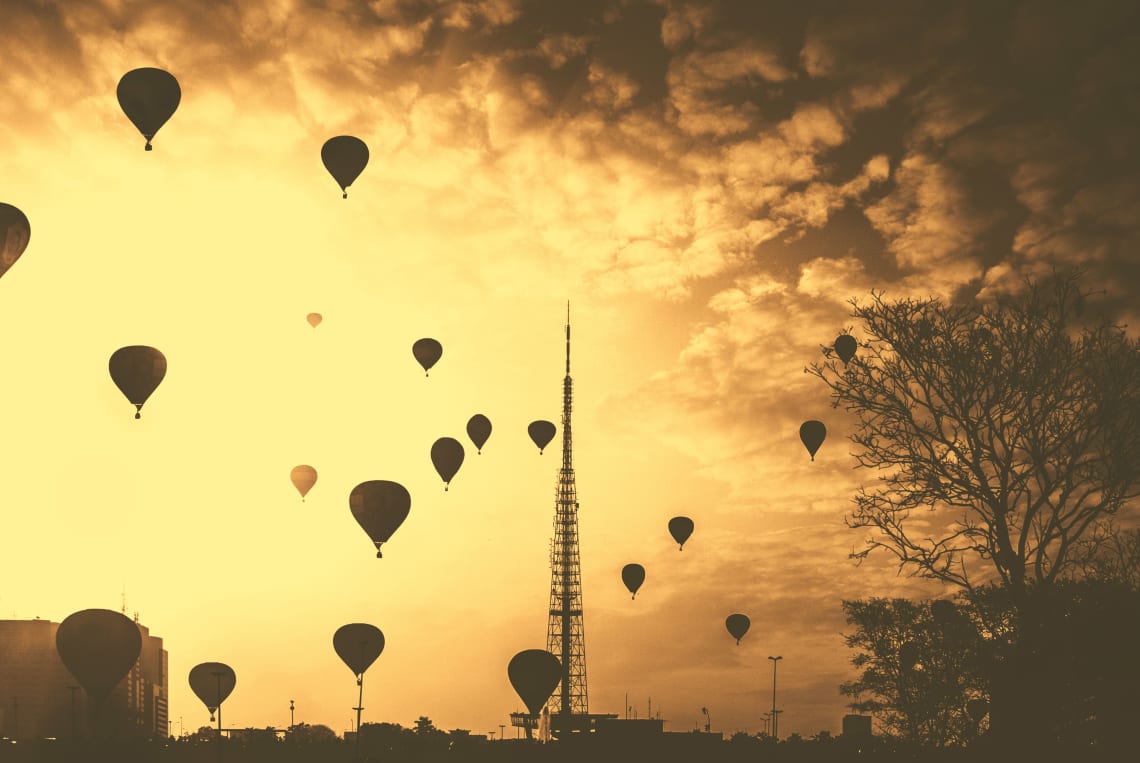
If you want to see the Central-West region of Brazil, your flight will land in Brasília, Goiânia or Palmas. Brasília is the third busiest airport in Brazil. Located atop the Brazilian highlands, Brasília is also the federal capital of Brazil and seat of government of the Federal District.
Some of Brasília's major landmarks include the Cathedral, National Library and government buildings. The Institute of Biological Sciences (IB) of the University of Brasília also makes for a nice visit.

From Brasília or Goiânia you can take a bus or organized tour to see Chapada dos Veadeiros National Park in Goiás!
Chapada dos Veadeiros is a UNESCO World Natural Heritage Site for being an outstanding preservation area of the Brazilian Cerrado — one of the world's oldest and most diverse tropical ecosystems.
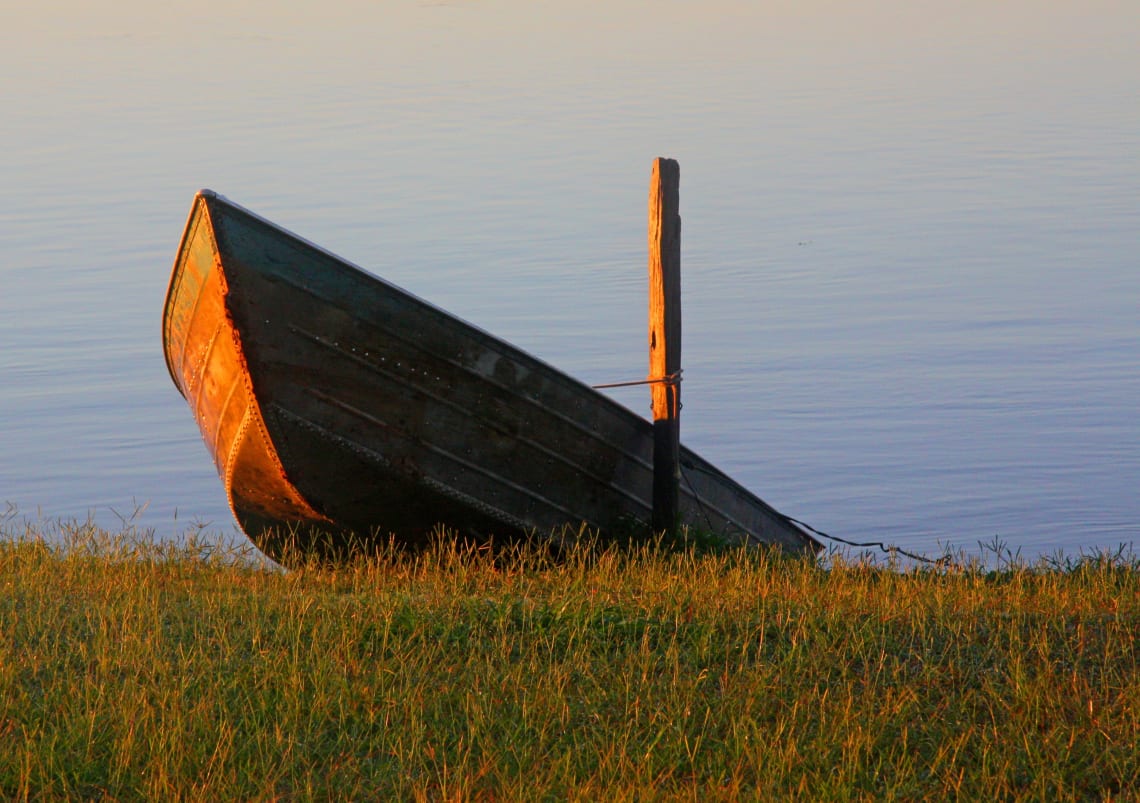
The Pantanal translates as 'large swamp' and is one of Brazil's most important biomes, encompassing the world's largest tropical wetland area.
While everyone has heard of the Amazon, The Pantanal Matogrossense National Park area far surpasses it when it comes to wildlife viewing. The Pantanal is home to over 600 species of birds as well as alligators, deer, otters, emus and monkeys. It's a fascinating destination if you love nature.
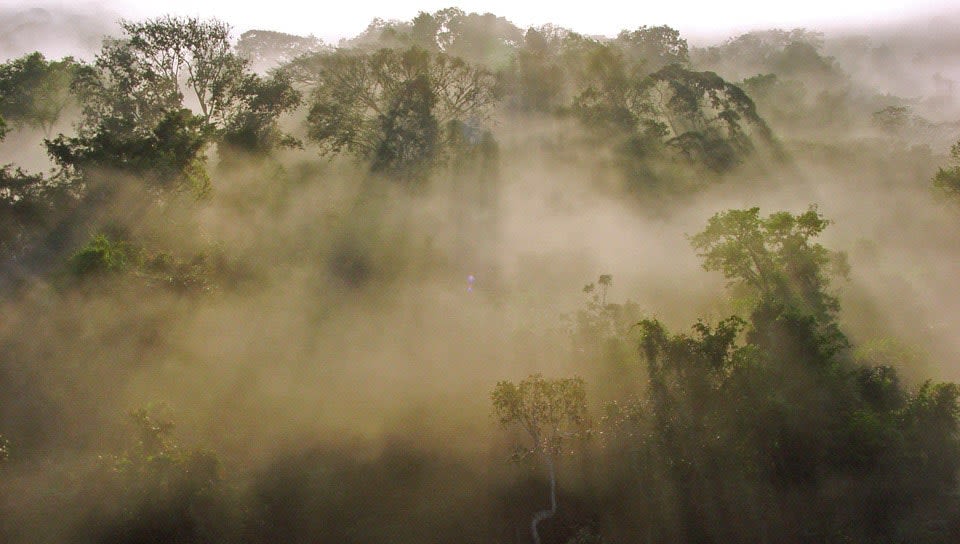
Alta Floresta is another great destination for outdoor adventurers in the state of Mato Grosso. Many Brazilians visit every year to fish, swim, hike in the forest and take boat trips to spot wildlife. Located at the southern edge of the Amazon rainforest, Alta Floresta is also on the way to The Cristalino Private Natural Heritage Reserve, another popular eco-tourism destination.
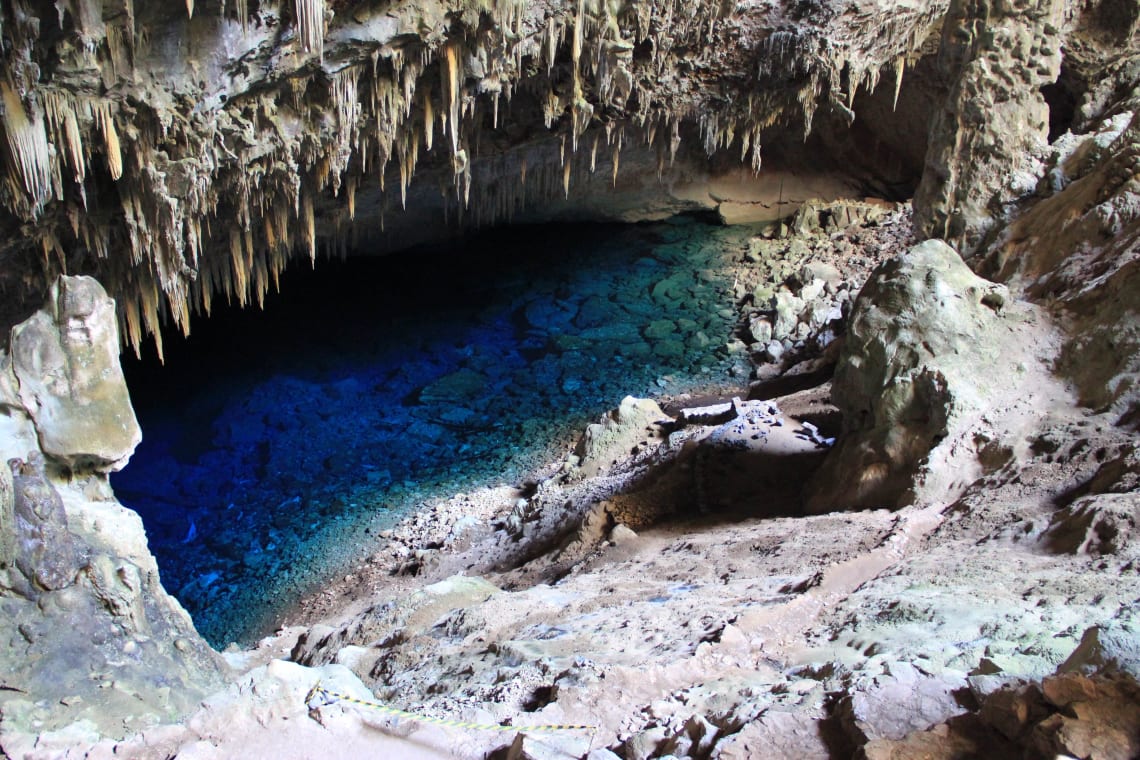
Bonito is the main destination in the state of Mato Grosso do Sul for people who like to go diving. Attractions such as the Blue Lake (pictured above), Mimoso Caves, the Natural Aquarium and the Sucuri River are the most visited. Rafting, treetop walking, waterfalls, caves, hiking and diving are some of the other popular options of things to do in Bonito.
Pro tip: Only 8 km away from Bonito you can visit Rio Formoso Ecological Park and get to know Brazil's rich diversity of flora.
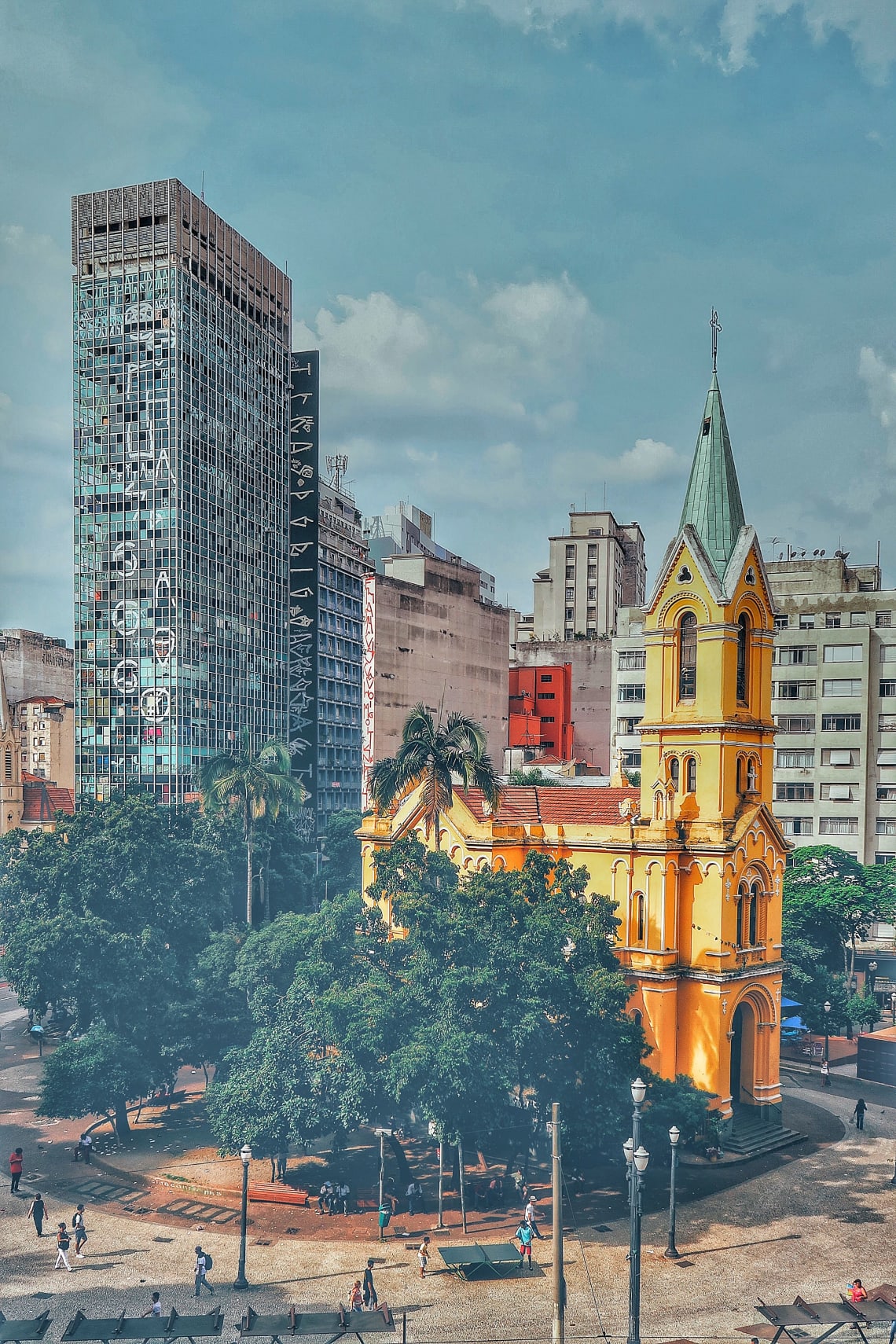
The list of things to do in São Paulo can get very long! Start with the museums like MASP, Museu Afro Brasil and The Pinacoteca, one of the most important art museums in Brazil. Walk Avenida Paulista and visit cultural centers like Japan House and Casa das Rosas.
On weekends, a traditional itinerary for paulistanos (São Paulo locals), includes going to fairs and markets around the city center. Fairs at Bixiga, Liberdade and Praça Benedito Calixto are some of the city's most famous, and offer local beers, organic products and artisan crafts.
São Paulo is also a nice place to visit parks like Ibirapuera or Vila Lobos. A portion of the city has bicycle paths, and some parks have their own museums, and auditoriums. Ibirapuera even offers a planetarium!
Don't miss the São Paulo LGBT Pride, which usually takes place at Avenida Paulista to the beat of trio elétricos (big decorated trucks with loud music). It's one of the largest parades of its kind in the world, and there's also debates and cultural fairs on topics like tolerance and respect.
Sampa, São Paulo's nickname, offers vibrant nightlife and a thriving culinary scene. You can find high-standard international restaurants and fine dishes made by famous Brazilian chefs. Sampa is also considered the Brazilian capital of pizza, with over six thousand pizza places scattered throughout the city!
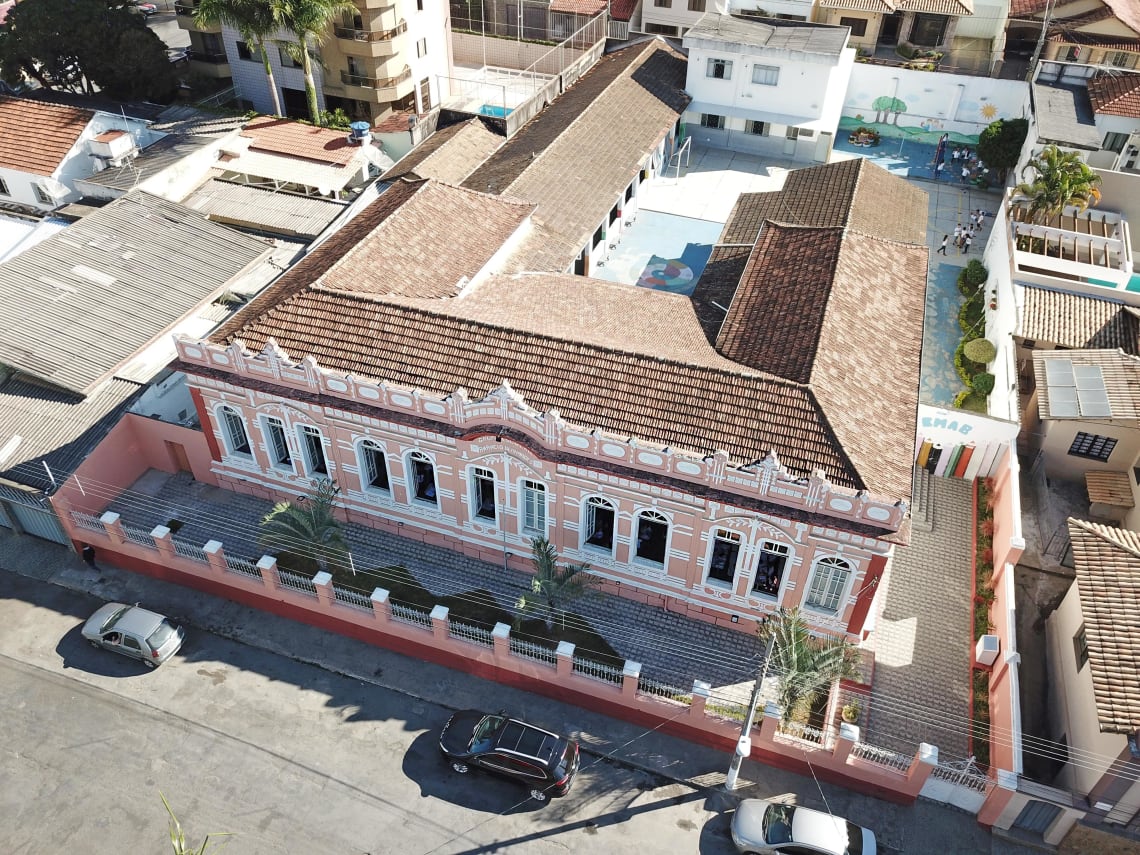
The capital of Minas is Belo Horizonte, or simply BH. It was the first Brazilian city planned from the start for future expansion in order to meet growing demand. Visit the Pampulha Art Museum, Pampulha Church, and Casa do Baile. Also nearby is Brumadinho, where you'll find Inhotim — a large open air museum with one of the most expressive contemporary art collections in the world.
Don't forget to try Pão de Queijo and the local cheeses in Minas Gerais, and also visit colonial towns like Ouro Preto, São João Del Rey and Diamantina.
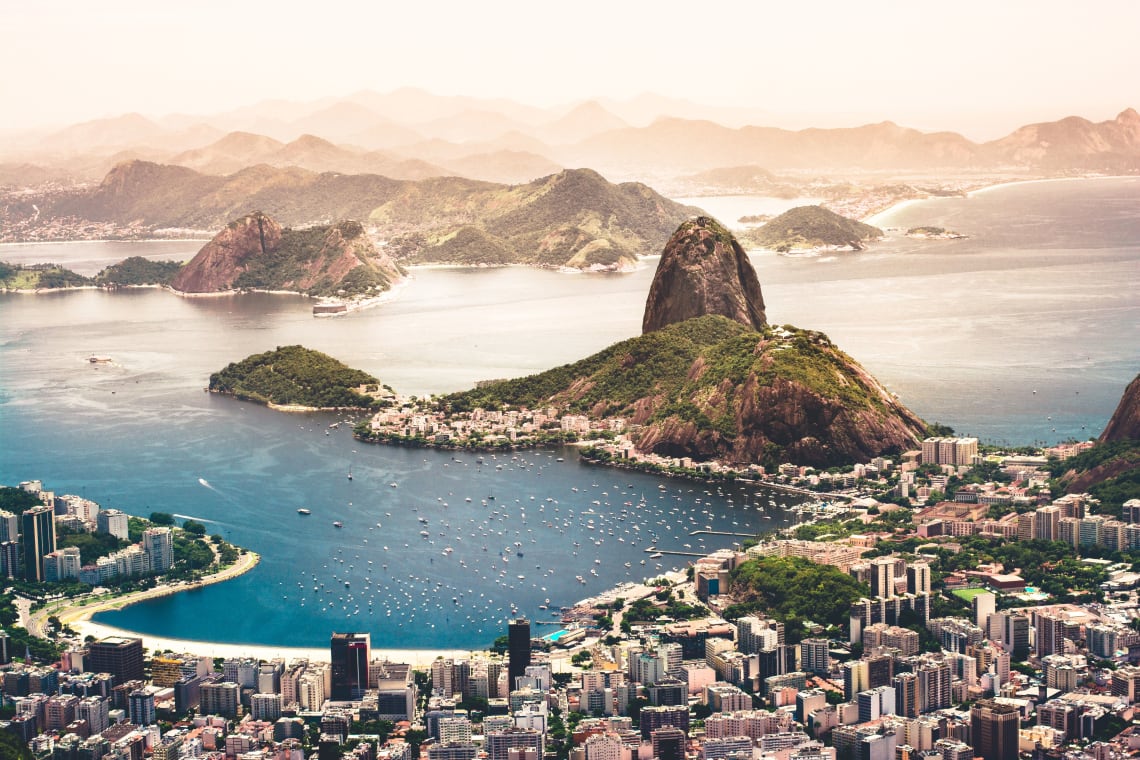
Rio de Janeiro is home to Christ the Redeemer and Corcovado Hill, two of the most visited attractions in Brazil. Standing at 38 meters tall, Christ the Redeemer is Brazil's most prominent landmark. From Corcovado Hill, you'll also see spectacular views of the entire city.
Visiting Copacabana and Ipanema are among some of the best things to do in Rio de Janeiro. These neighborhoods can mean very different things for different people; for some, they are a business or tourist destination, but for locals, they're great places to exercise, meet friends, and socialize.
Carnival in Rio de Janeiro is all about samba, dancing and parades full of more color and rhythm than you can possibly imagine. If you're planning a trip to Brazil, Carnival in Rio is probably one of the best and worst times you could possibly go. Hotels get insanely expensive, but you can always find plenty of Worldpackers hosts in Rio and save lots of money to spend on caipirinhas!

Curitiba has a strong cultural influence from its many Italian, German, Polish and Ukrainian immigrants. In addition to being a cosmopolitan city, Curitiba is also one of the most prosperous and organized cities in Brazil.
A strong tech scene and culture of innovation permeates Curitiba. The city is also home to many parks and green areas.
The best things to do in Curitiba include visiting Parque Barigui, Opera de Arame and Tangua Park. Parque Barigui in particular is a favorite spot among locals and a great place to see capybaras, birds and beautiful nature. It's also worth seeing The Oscar Niemeyer Museum, a space dedicated to the exhibition of visual arts, architecture, urbanism and design.
Curitiba is one of Brazil's most cultural cities and has the highest number of vegetarians in the country! Don't forget to visit the Contemporary art Museum, Indigenous Art Museum, Holocaust Museum and Botanical Garden.
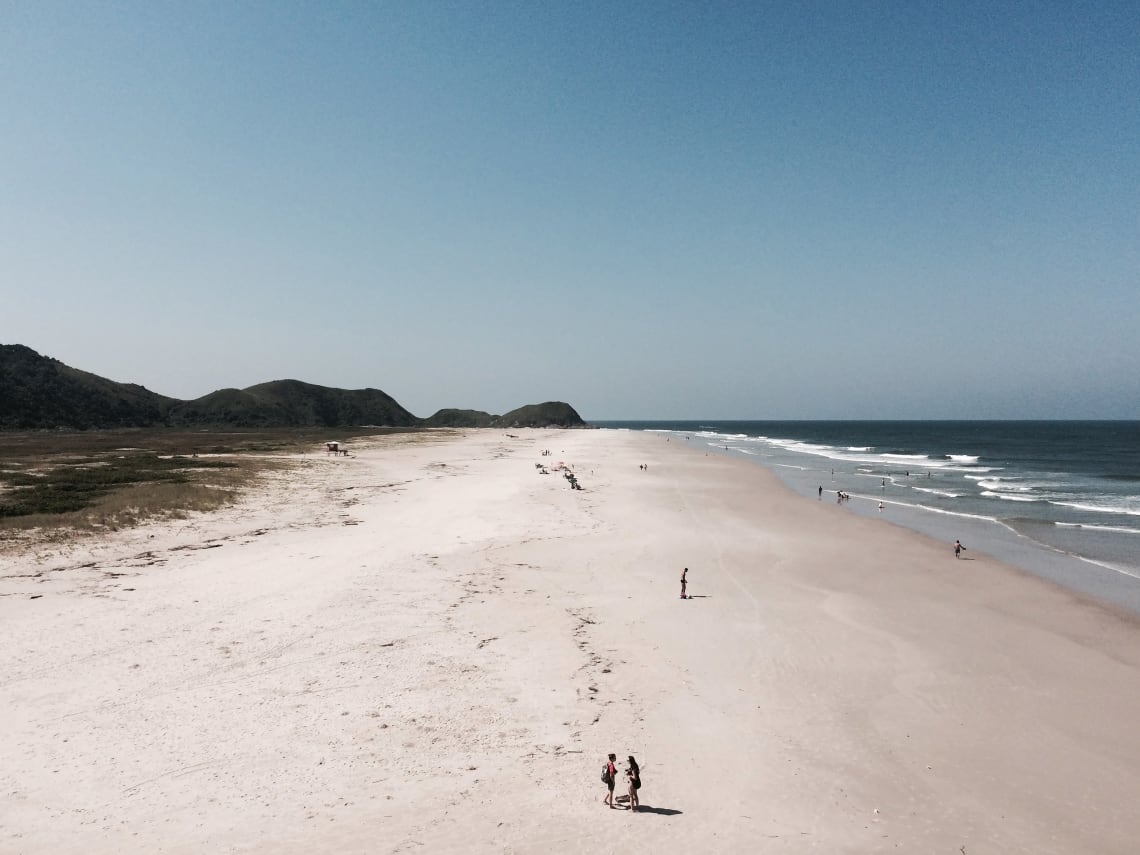
Just two hours by car from Curitiba is Ilha do Mel (Honey Island). The name makes it sound like a honeymoon destination, but it's actually one of the most pristine and picturesque beaches in all of Brazil.
Ilha do Mel is calm, clean and not many people go there during low season... so if you're lucky, you might find a beach all to yourself!
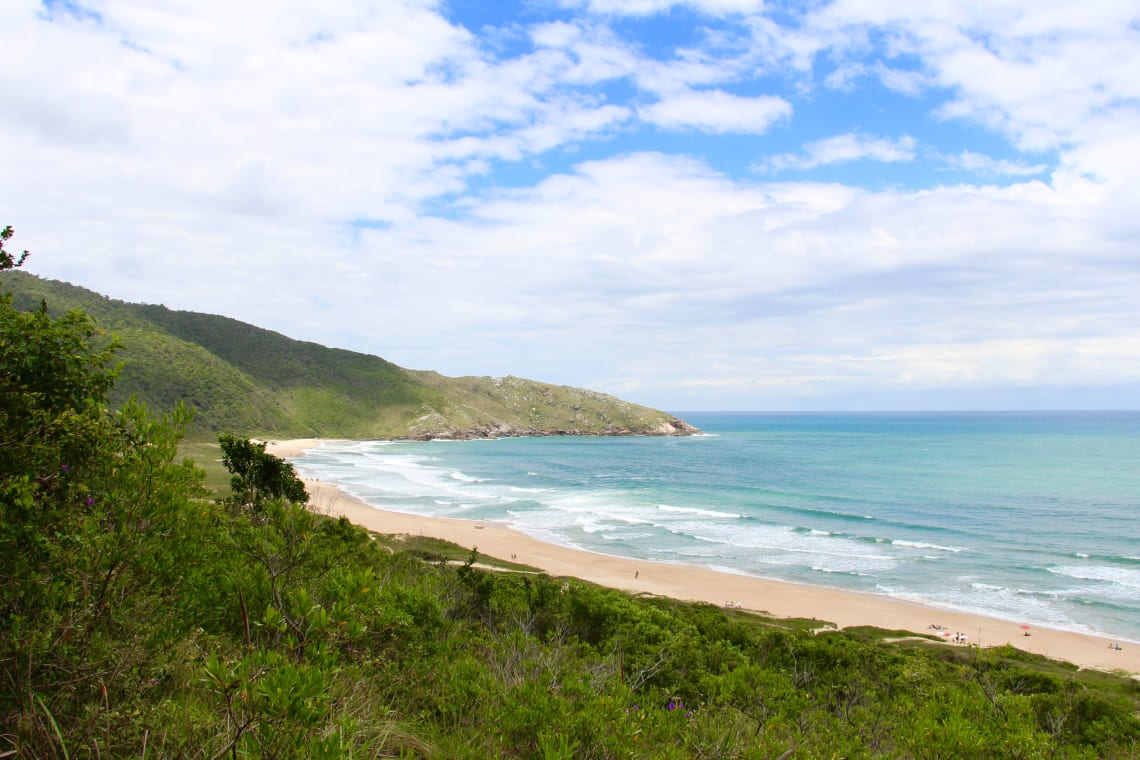
A four hour drive from Curitiba, Florianópolis, also called Floripa, is divided into two parts. Most of the city's area consists of the island of Santa Catarina, connected to the mainland by two bridges. Santa Catarina is famous for its beaches but also has beautiful forested mountains and a lagoon.
Jurerê Internacional is a beach-side neighborhood on the northern shore of the island of Florianópolis in Santa Catarina. Full of luxurious mansions and fancy restaurants, Jurerê offers some of the most lively nightlife in Brazil.
Florianópolis is a famous spot for surfing in Brazil and hosts national and international championships. Joaquina and Praia Mole are examples of famous surf beaches in Florianópolis. Sailing, kitesurfing, diving and offshore fishing are also among the city's main activities.
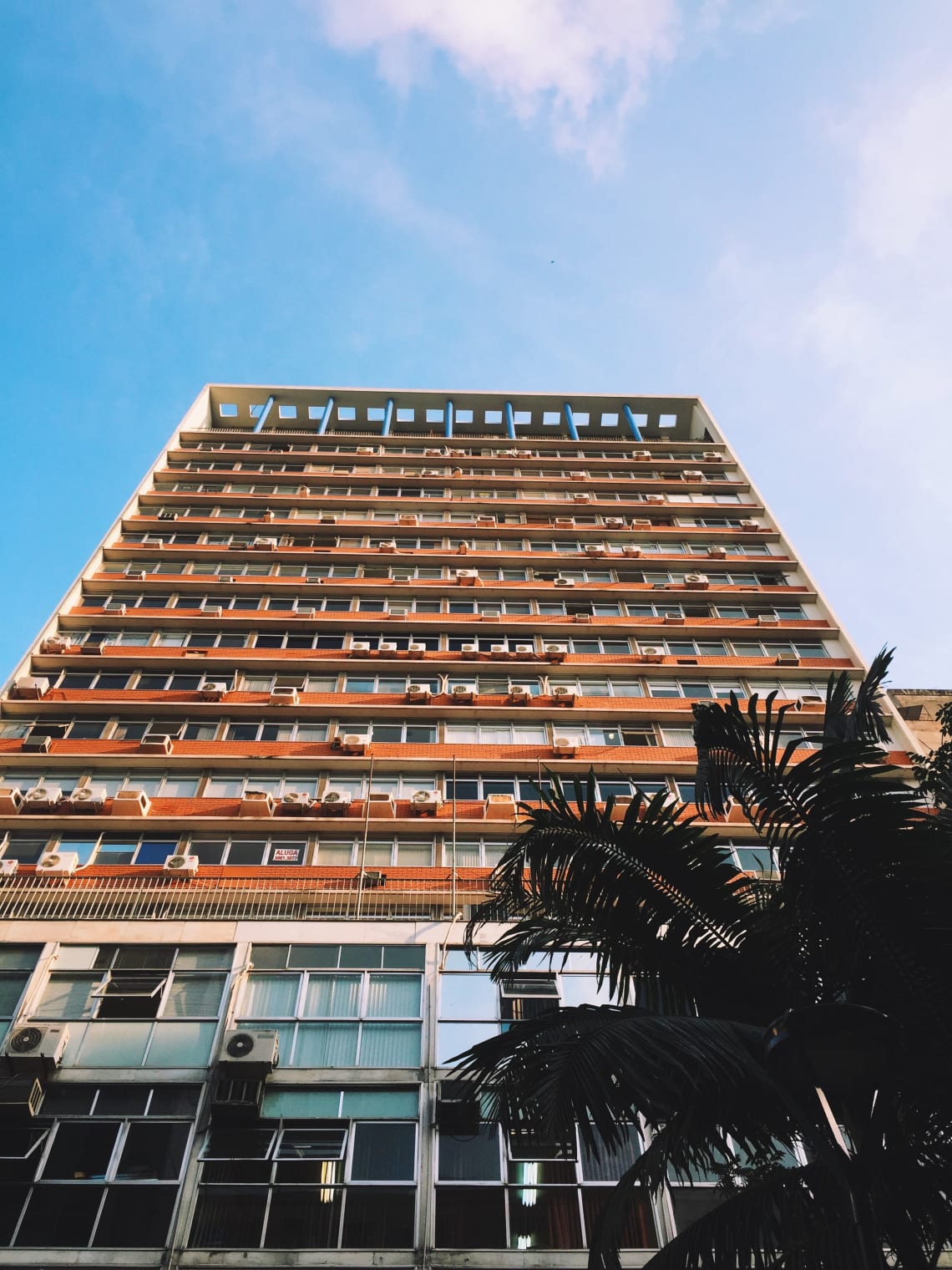
Only an hour and a half away from Serra Gaucha, Porto Alegre is the first of many trendy destinations in South region of Brazil such as Gramado, Canela, and Bento Gonçalves.
Porto Alegre is the capital of Rio Grande do Sul, the last state in Brazil before Uruguay! The city is home to more than 50 museums and cultural centers. The Gasometer is one of the best places to visit in Porto Alegre. It's a former power station that has become a cultural center. The rooftop offers a great view of the river.
At Memorial of Rio Grande do Sul you'll learn about the state's history and partake in wine tasting sessions provided by regional winemakers!
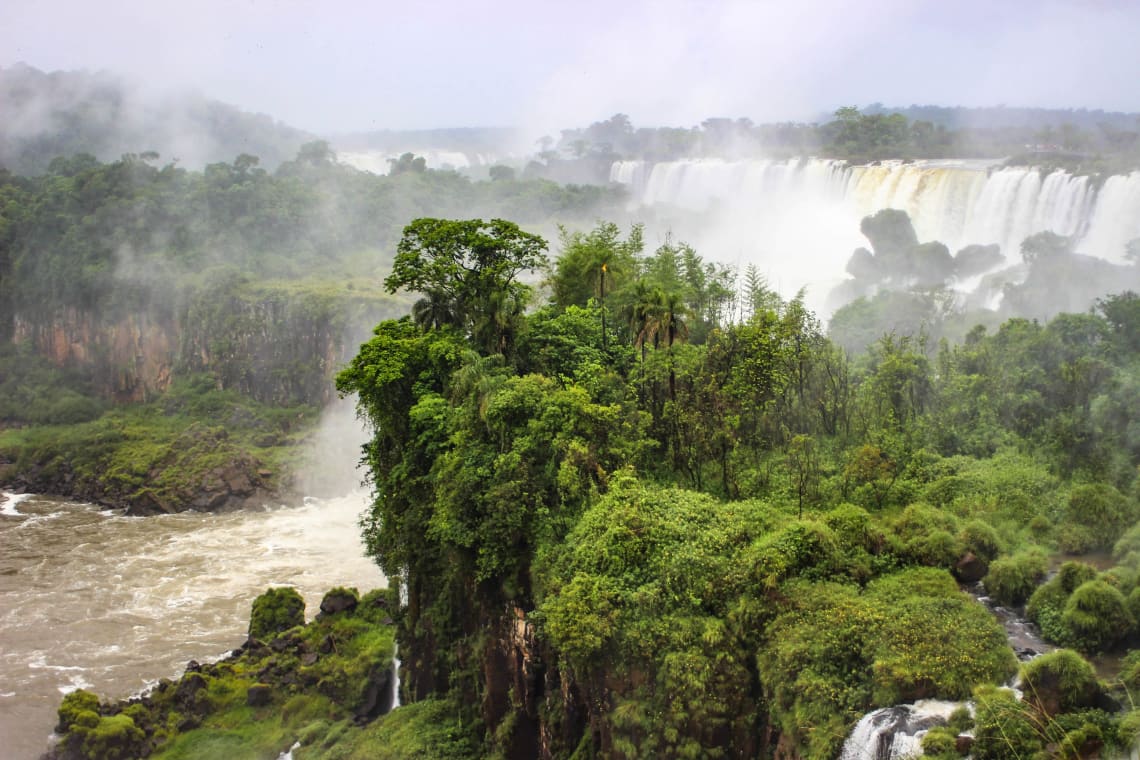
At the point where Brazil, Paraguay, and Argentina meet, the Iguaçu river drops spectacularly in a group of hundreds of waterfalls that thunder down into the gorge below. Some of the falls — like Garganta do Diabo —are more than 100 meters high!
The forest and river cover such a broad area that it's impossible to see everything at once, but you'll get the broadest panorama from the Brazilian side of the falls. If you choose to visit the Argentinian side, you'll have more options to explore the rainforest's unique flora and fauna, while also enjoying trails to spectacular views.
Both sides offer different perspectives and views, so most tourists choose to see both. The falls are protected by the UNESCO-acclaimed Iguaçu National Park, where subtropical rainforests guard over a 1,000 species of birds and mammals, including deer, otters, ocelots, and capybaras.
Iguaçu National Park, with the Falls as its main feature, is considered a UNESCO World Heritage Site for its exceptional natural beauty and habitat of rare and endangered species.
Want to have an authentic local experience in Brazil? Look no further than a work exchange in Brazil with Worldpackers! Help a host by becoming a member of the Worldpackers community and get accommodation and other benefits in exchange for a few hours of work a day.
When planning to visit Brazil on a budget, it's especially nice to know where to start. I've selected a few great Worldpackers hosts in Brazil below for inspiration.
If you want to experience the Brazilian Cerrado and learn more about Brazil's immense biodiversity, check out the projects on offer in Alto Paraíso de Goiás, Brazil. Most of these projects offer the opportunity to be immersed in incredible nature, and volunteers often include students from cities nearby like Brasília and Goiânia.
If you're looking for a full-on immersive eco experience, consider working at Coletivo Mão na Terra, an urban permaculture farm in Curitiba. In addition to caring for the agro-forest and community garden, you’ll help with events and courses about permaculture and urban nature conservation, learn how to make organic soap and natural inks, and practice yoga and meditation. Any event or activity during your stay is free and the Coletivo is located right next to the Oscar Niemeyer Museum (The Eye Museum), which a great place to start exploring Curitiba, otherwise known as the cultural capital of south Brazil.
If you to enjoy relaxed guesthouse environment during your time in Brazil, stay in the mountains while doing a work exchange in Ibitipoca, Minas Gerais. Ibitipoca is a mountain village located near a state reserve with paradise-like waterfalls. The hostel/guesthouse on offer is a delightful country house with wood-burning stove, grass in the front yard, fruit trees and birds. If you look forward to lying in a hammock, reading a book, stargazing, and having a coffee and simply being, this is the ideal place for you.
Generally speaking, Brazil isn't an expensive country to visit. It's not hard to travel on a budget in Brazil. For those coming from the United States, Australia, the UK or Europe, the exchange rate will make you feel like everything is very cheap. For those coming from Latin America, this may vary. The currency in Brazil is the real (R$), and R$1.00 is currently worth ~US$0.26.
Prices in Brazil have not been consistent for a long time and locals complain frequently, especially about gas and grocery prices. Still, if you want to know how to eat cheap in Brazil, my best advice is to go to a supermarket, buy your own food, and cook at your hostel.
If you don't like to cook, eating out in Brazil is not the cheapest of activities, but it's certainly possible to find affordable places with delicious food. Especially if you like a big lunch. Brazilians tend to eat their largest meal in the middle of the day.
You can find all major fast food restaurants and plenty of information online about affordable places to eat in the main capitals, and throughout the country you'll find any kind of food you can imagine. "All you can eat" restaurants are very common for pizza, meat and sushi and they're called Rodízio. You can eat rodízio de pizza from R$25 to R$125 depending on the quality and location of the restaurant you go to.
If you're traveling around Brazil on a budget, eat where the locals eat. Go to a city center and look for the words marmita, prato feito or the abbreviation "PF", and you might be in for a nice treat. Marmita is a packed lunch you can buy in almost any restaurant near an office district or city center in Brazil. It will, almost certainly, include rice, beans, some sort of salad and meat. Usually, you can choose the kind of meat from chicken, pork, beef or fish. If you're a vegetarian, ask for eggs and some extra salad. Don't forget to smile and say obrigado!
A marmita in São Paulo can go from R$8 to R$50 depending on what you order. There are even restaurants specialized in vegan pocket lunches and other healthy alternatives. In Curitiba, you can eat as much as you want for R$20 if you go to the office district at lunch time. The further north and northeast you go, the more this kind of food gets cheaper.
One big expense in Brazil is transportation, since the country is quite big. The cheapest option is to travel by bus or car. BlaBlaCar is a great resource for safe, cost-effective travel in Brazil. For example, a ride from São Paulo to Curitiba using BlaBlaCar costs around R$90 or less.
Intercity buses are a good way to visit Brazil on a budget too, but keep an eye on airlines like Azul, Gol and LATAM. Domestic airlines often have promotions and low-cost flights between the main cities. In 2019, a good average price to look for when booking a flight between Rio and São Paulo is less than R$200.
If you're planning to stay in one city for a while, you can expect to pay around R$4.50 to use the local bus or metro. By the way, São Paulo has the biggest metro network in Brazil, and only four other cities in Brazil have subway lines. São Paulo is one of the most crowded metro systems in the world, so avoid rush hours (from 6 to 9 am and from 5 to 8 pm).
You can find a hostel for R$25, but you don't need to stay in a very cheap place if you exchange work for accommodation.
Without paying for accommodation, and getting up to three daily free meals, the price of your trip will drop massively. If you find a host that provides only breakfast, you could easily survive on R$100/week. If you want to party, buy drinks from the supermarket and have an esquenta with friends before you go out. Esquenta means warm-up, and is a kind of home party before the main party. Brazilians use esquentas to drink at home or at the hostel to get a little tipsy before they go out to bars, in order to save some money.
Remember to use the Worldpackers travel experience to your advantage and ask your host about their favorite places to eat, the best routes to get where you want, and nice bars to go out. Or turn on the adventure switch and go wander with other world-packers that are also touring Brazil on a budget.
Consider saving some money for vaccinations. In Brazil, vaccination is not a requirement for tourists, but it's highly recommended. Remember to include that cost if you want to be safe when traveling to Brazil.
Yellow fever, malaria and dengue are present in many regions of the country, so be sure to take proper precautions to avoid mosquito-borne diseases. Bring repellent and use proper equipment if you go camping, like mosquito nets.
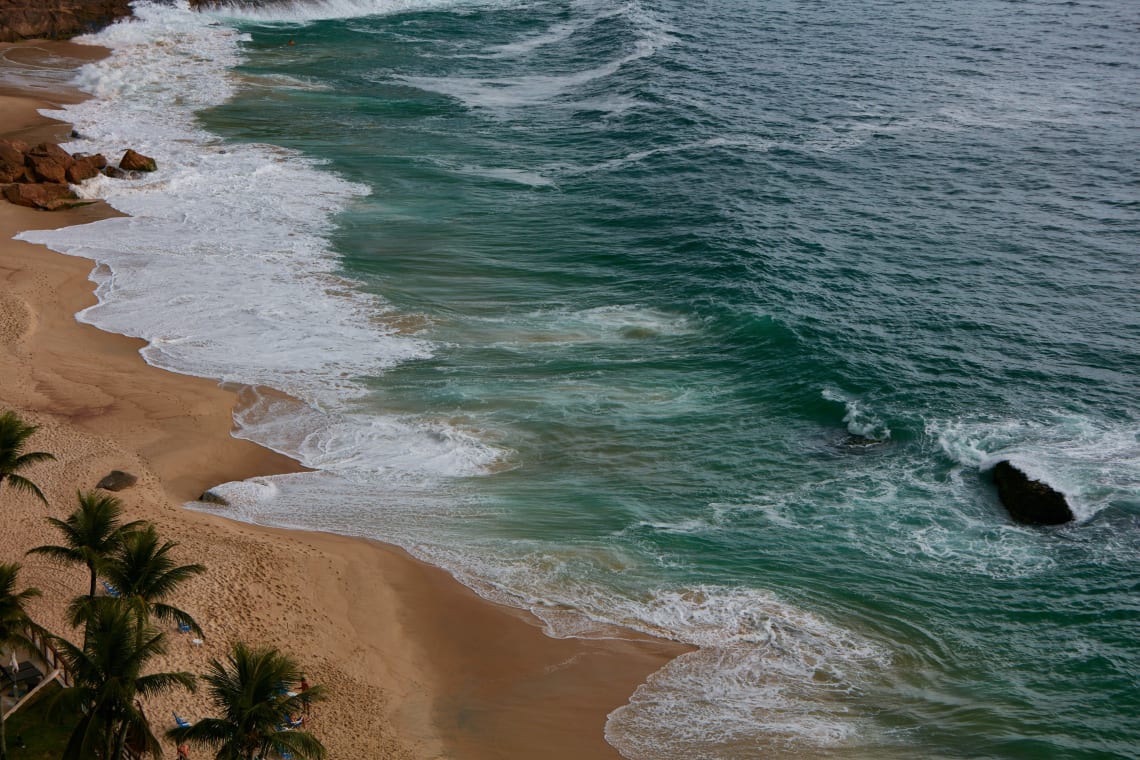
It's very easy to define Brazil in terms of Carnival, caipirinhas, and nice landscapes. However, when traveling to Brazil, it's only inevitable that you will get a true feel for the complex layers of this vibrant, diverse, and immense nation.
There are two things that unite all Brazilians: hospitality, and a big smile. Open your mind and heart to discover Brazil and I promise that you will be welcomed with open arms.
Escriba aquí sus preguntas y saludos al autor